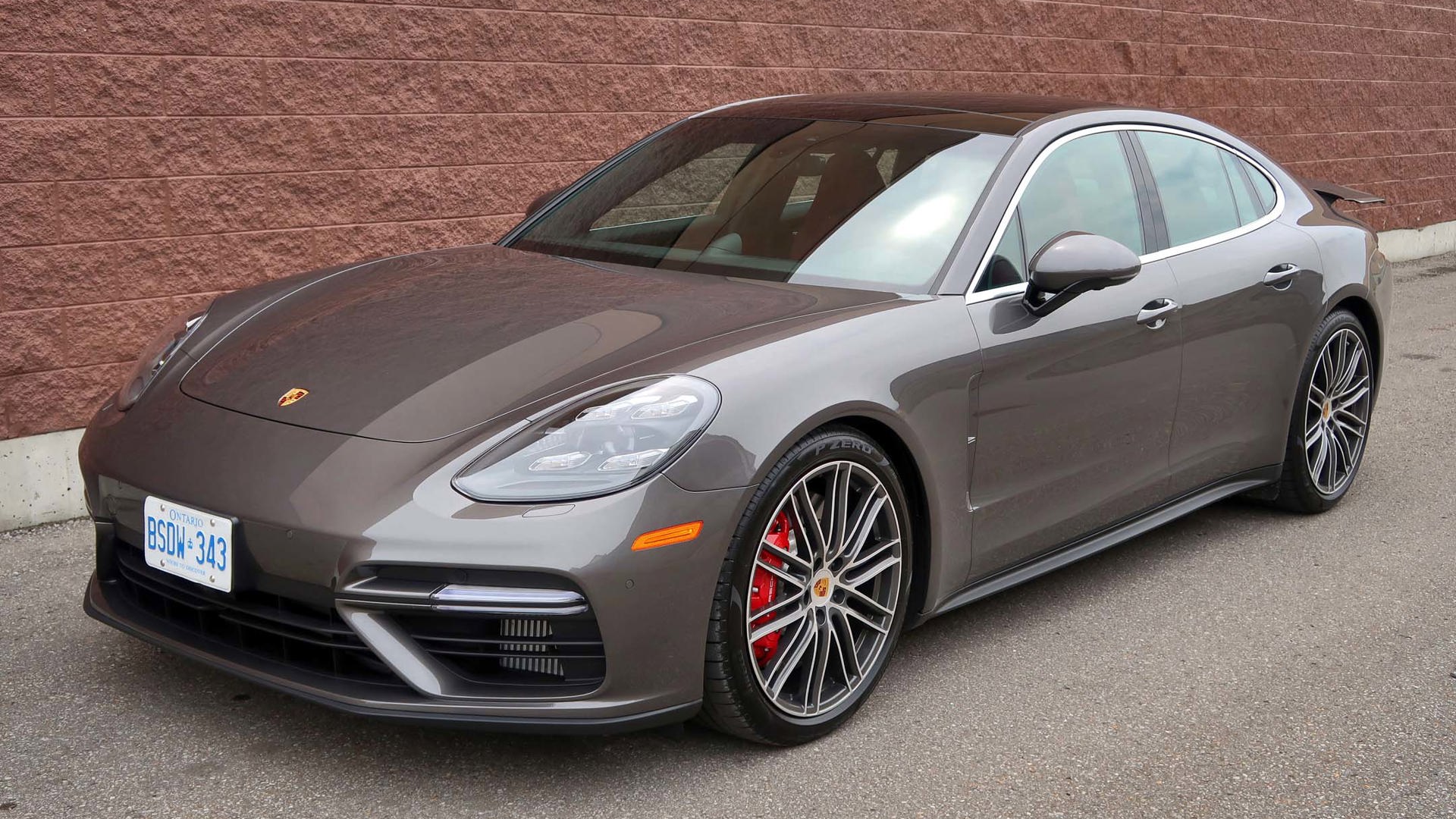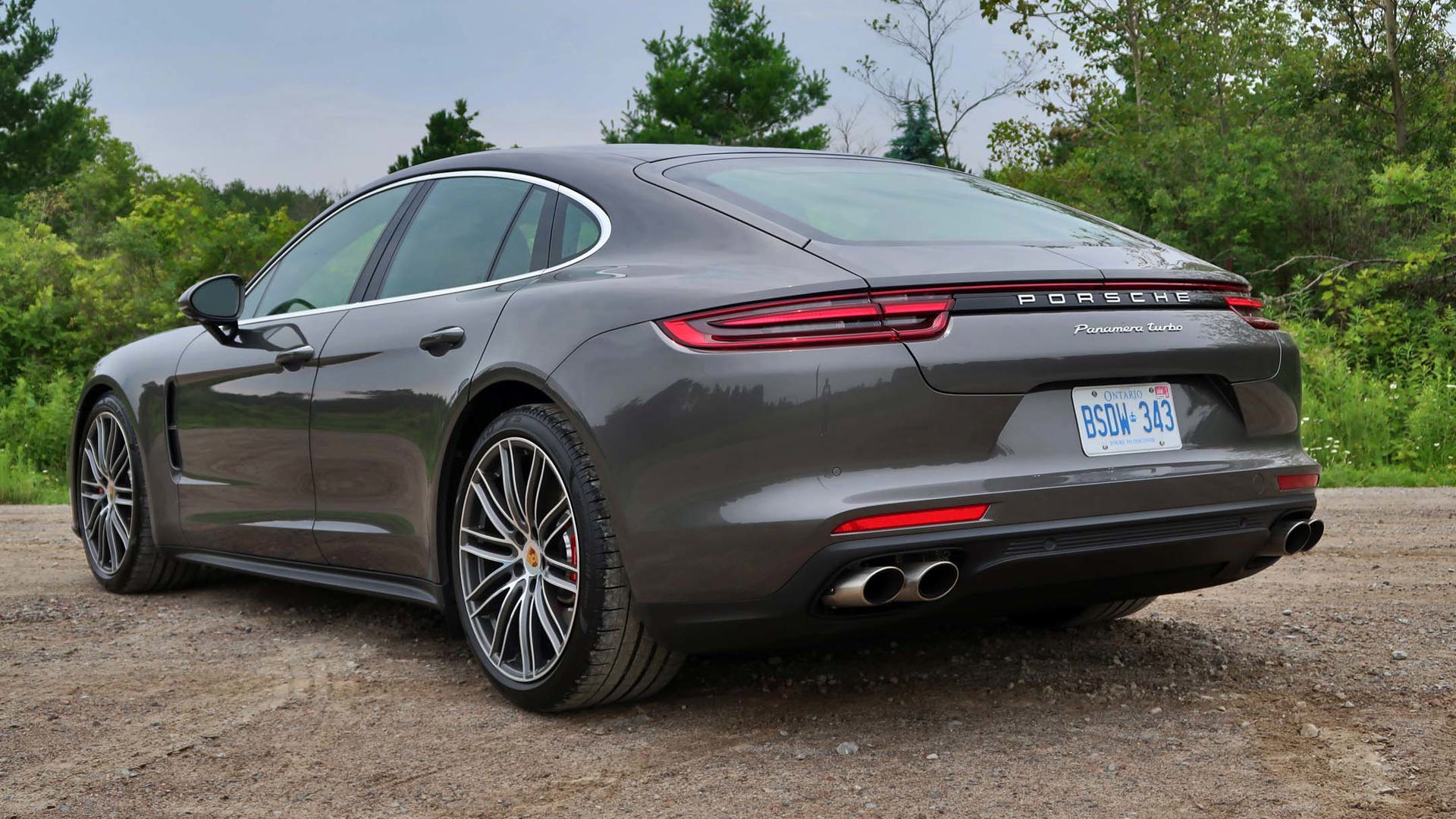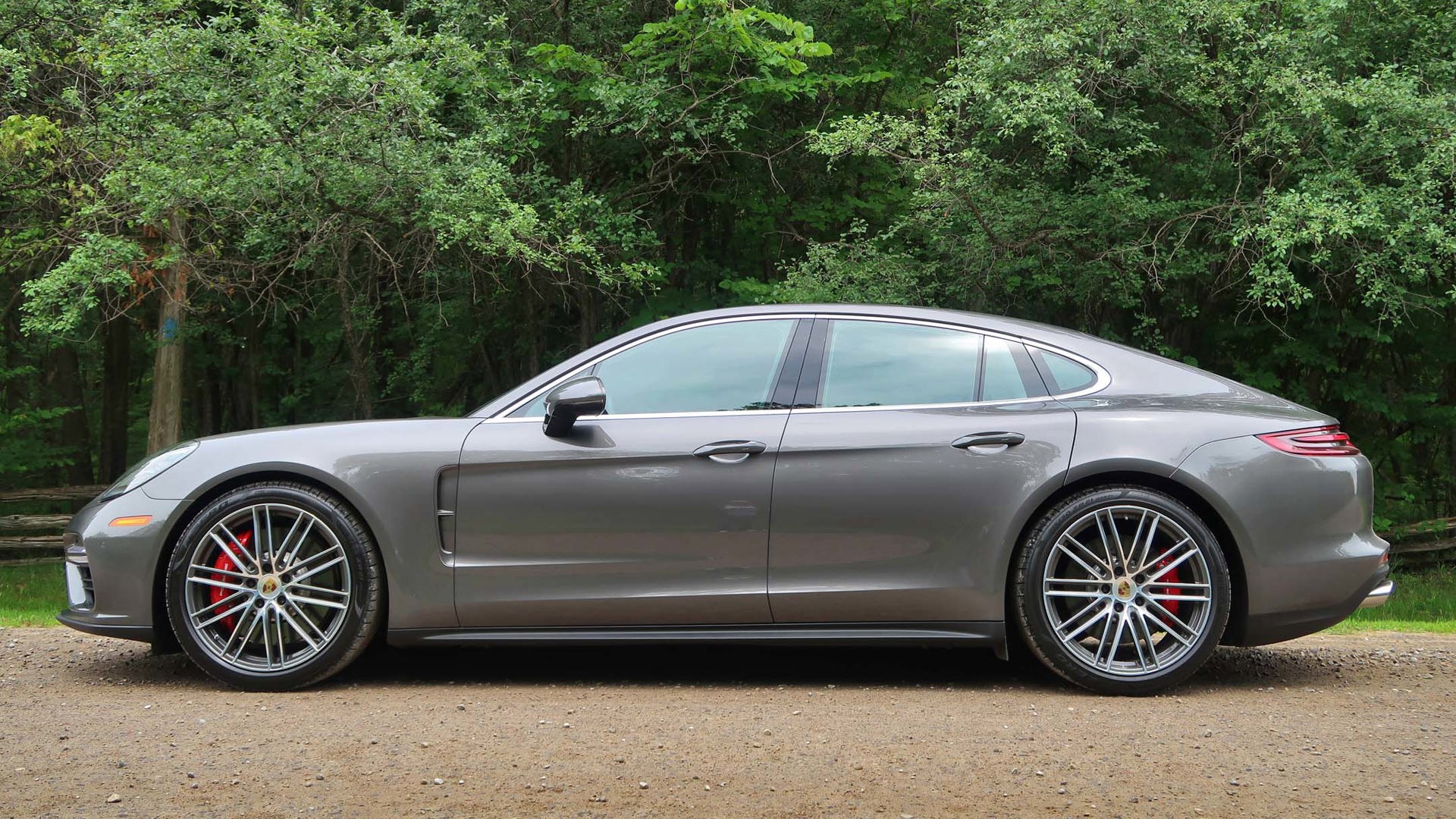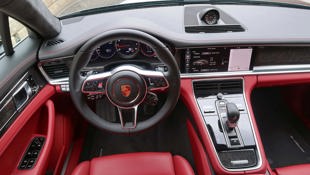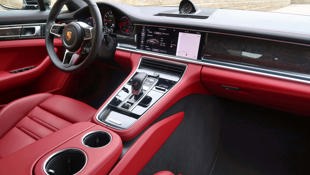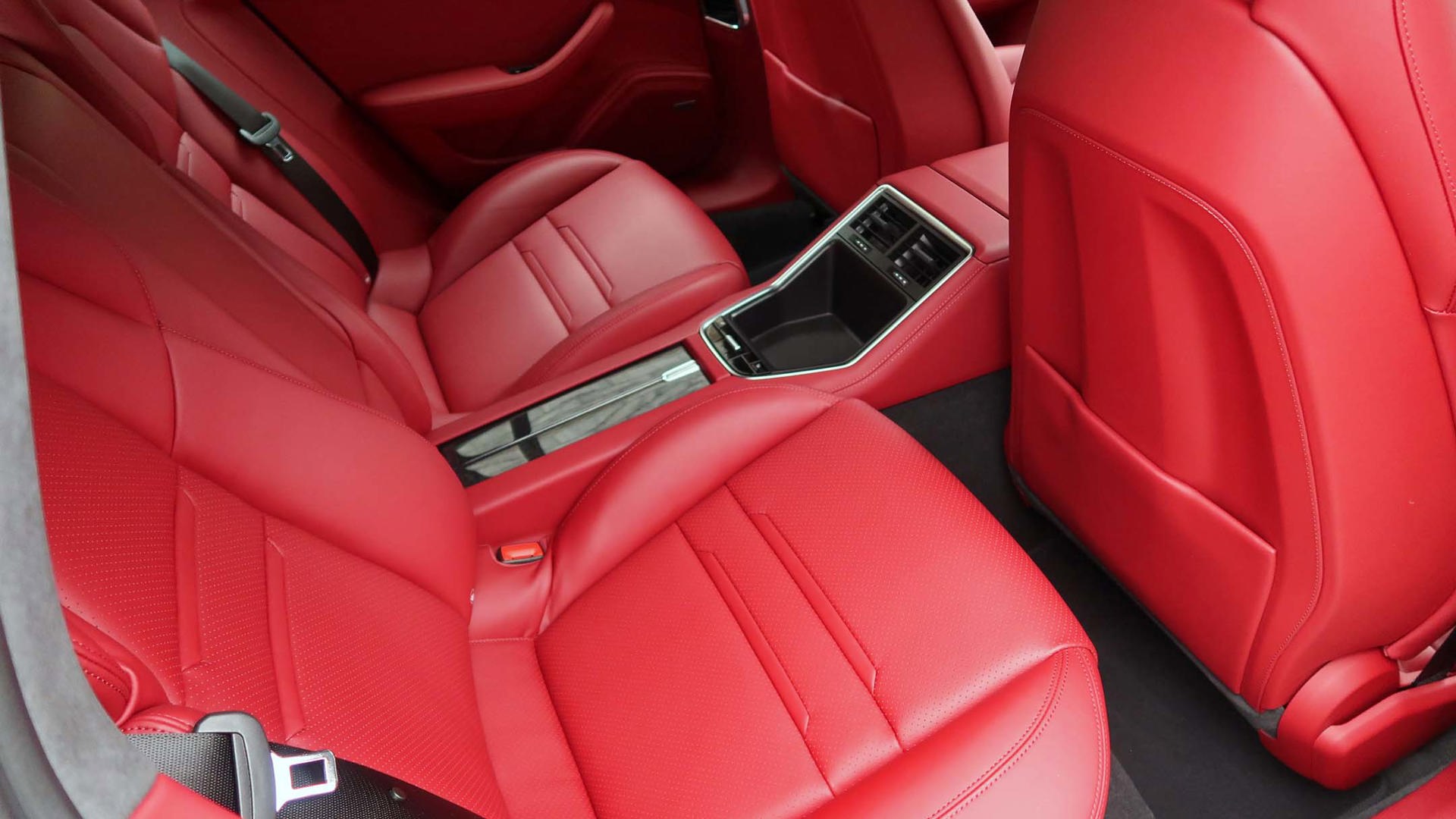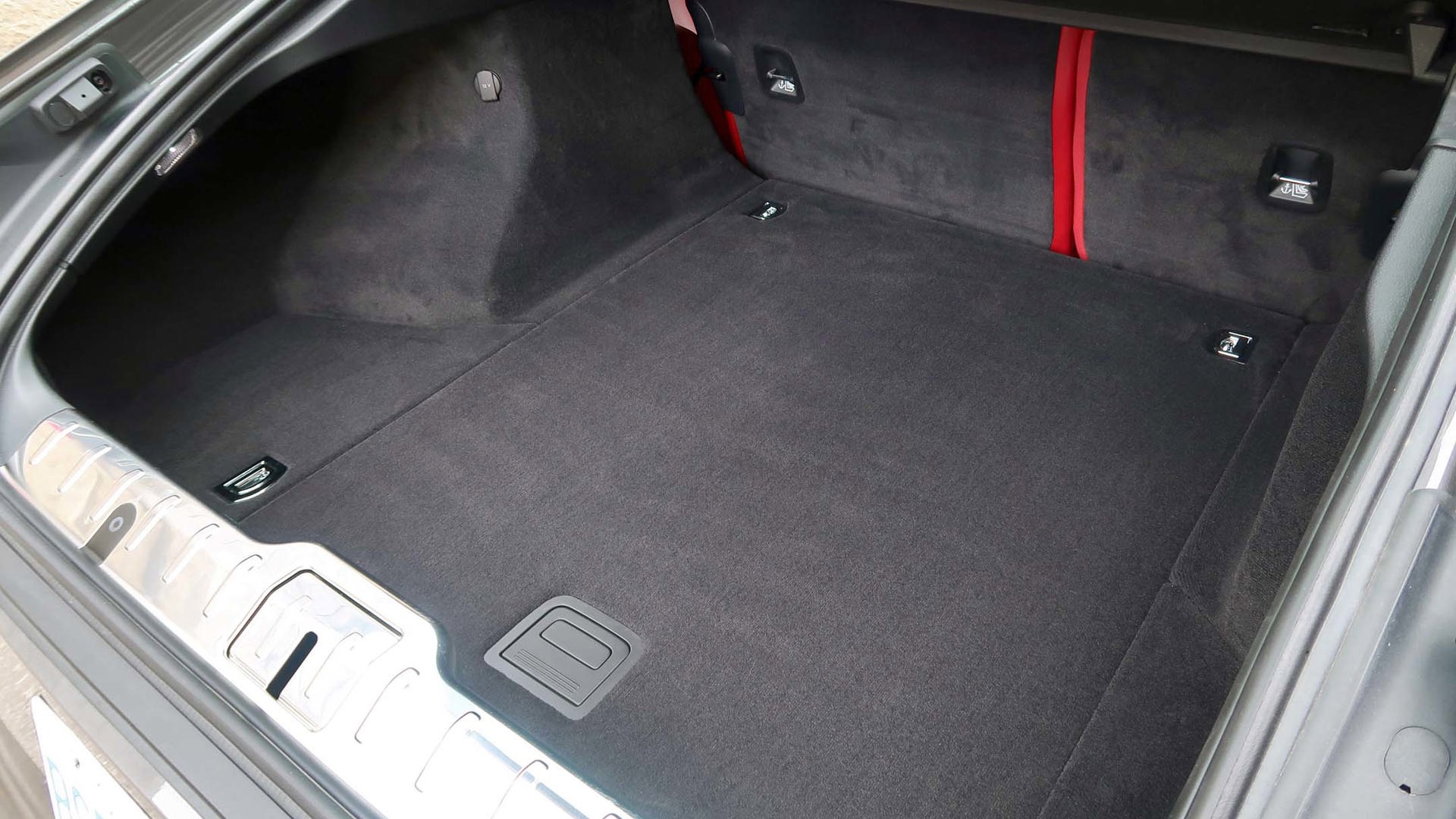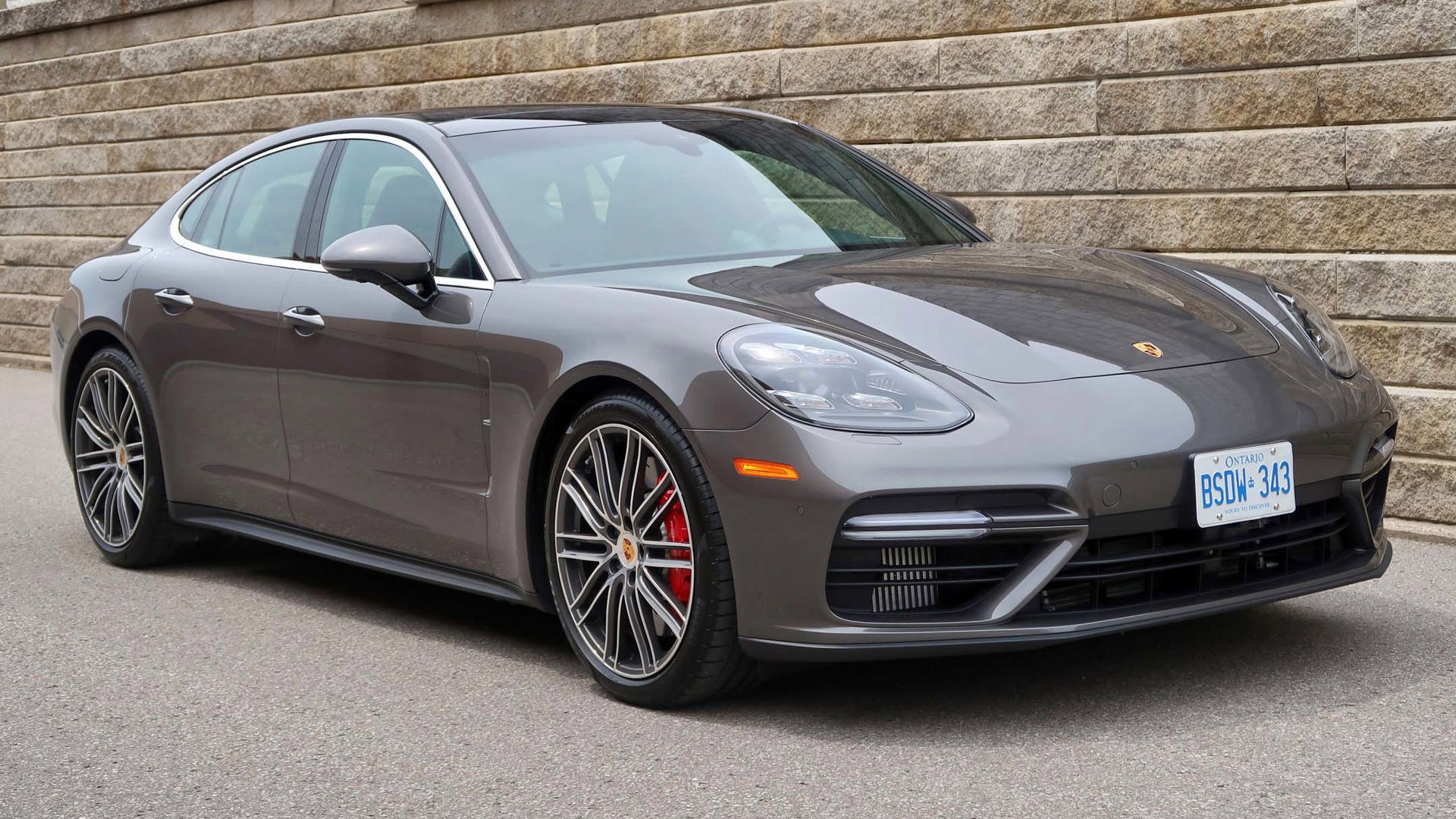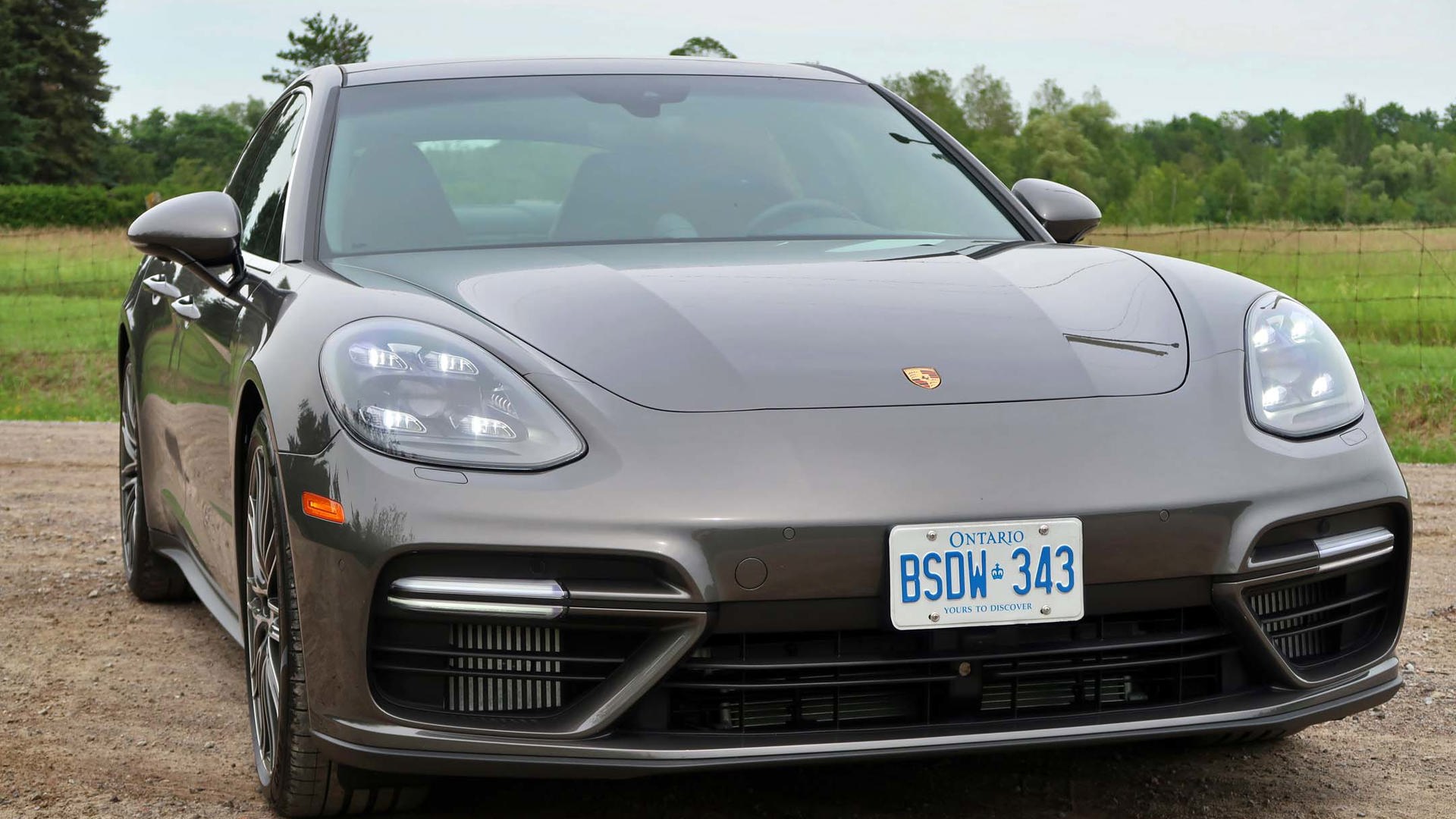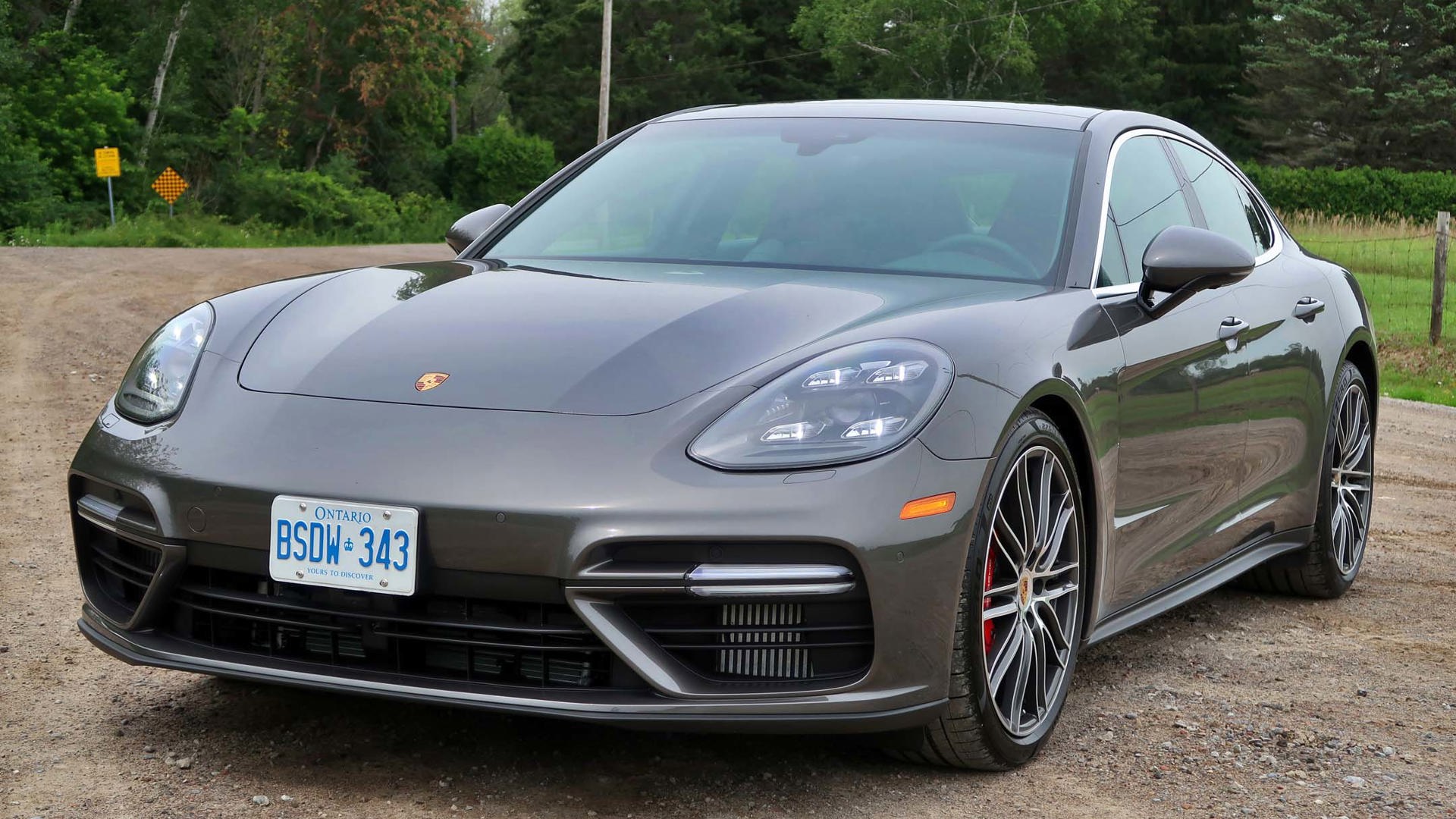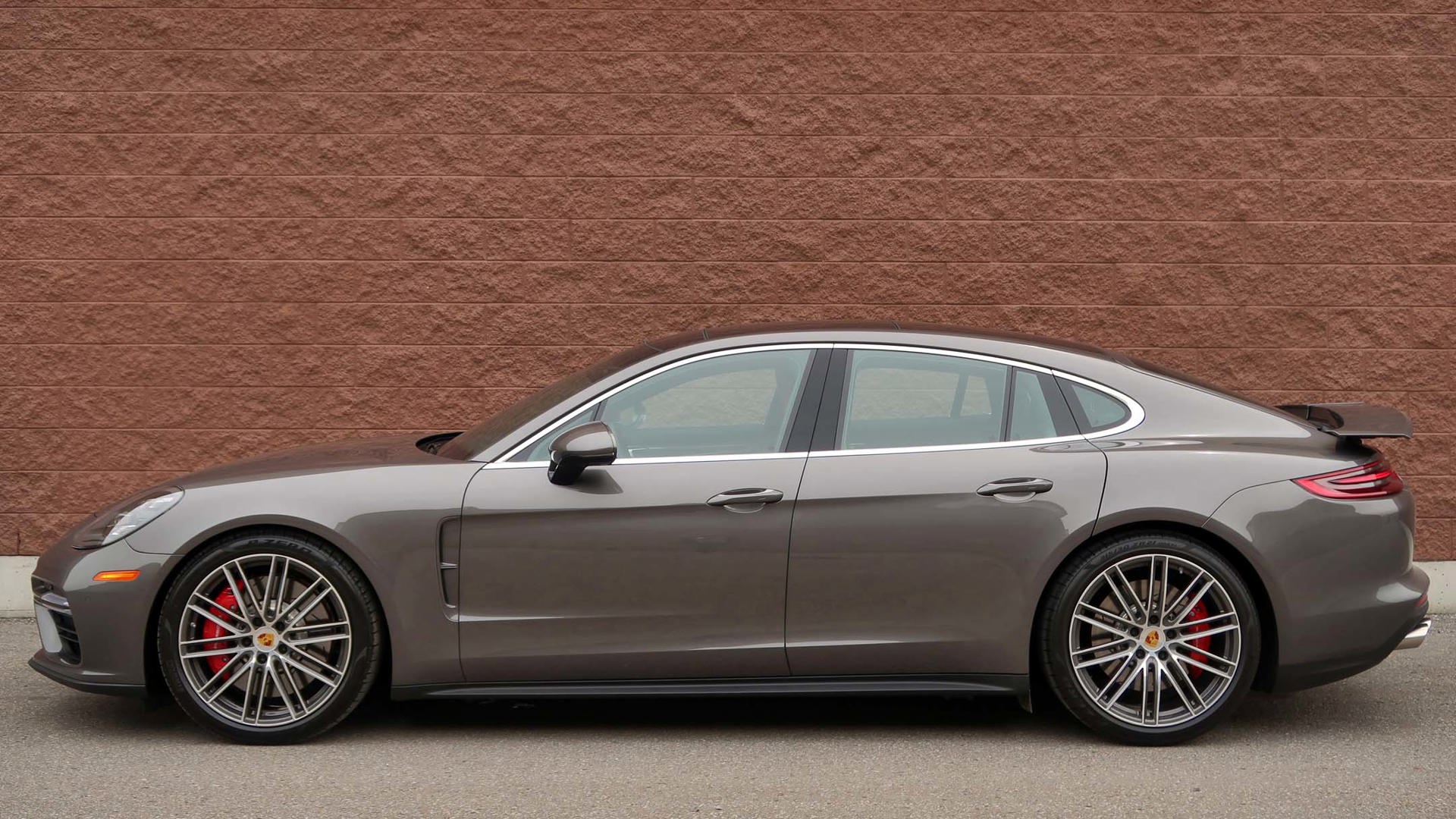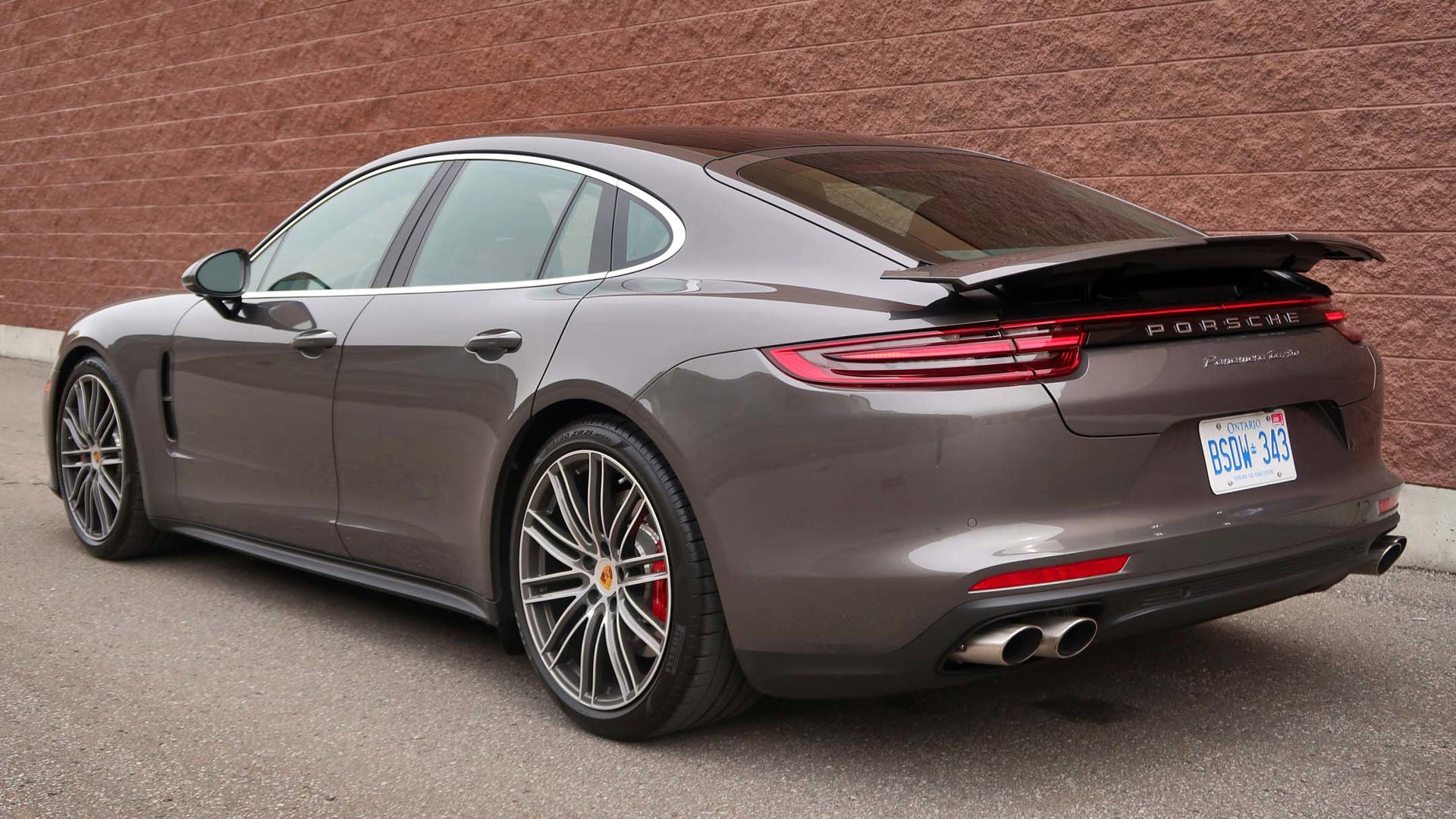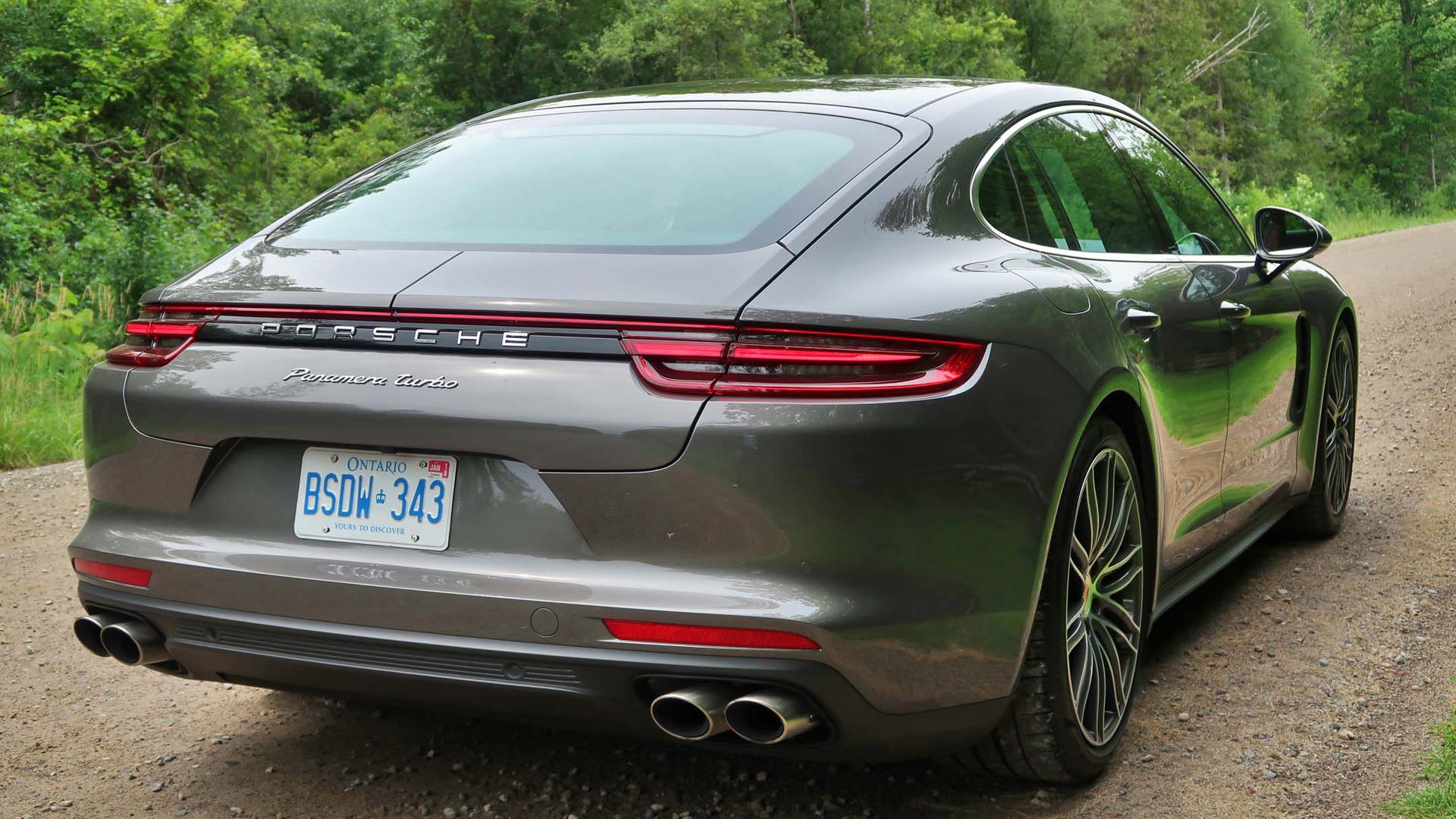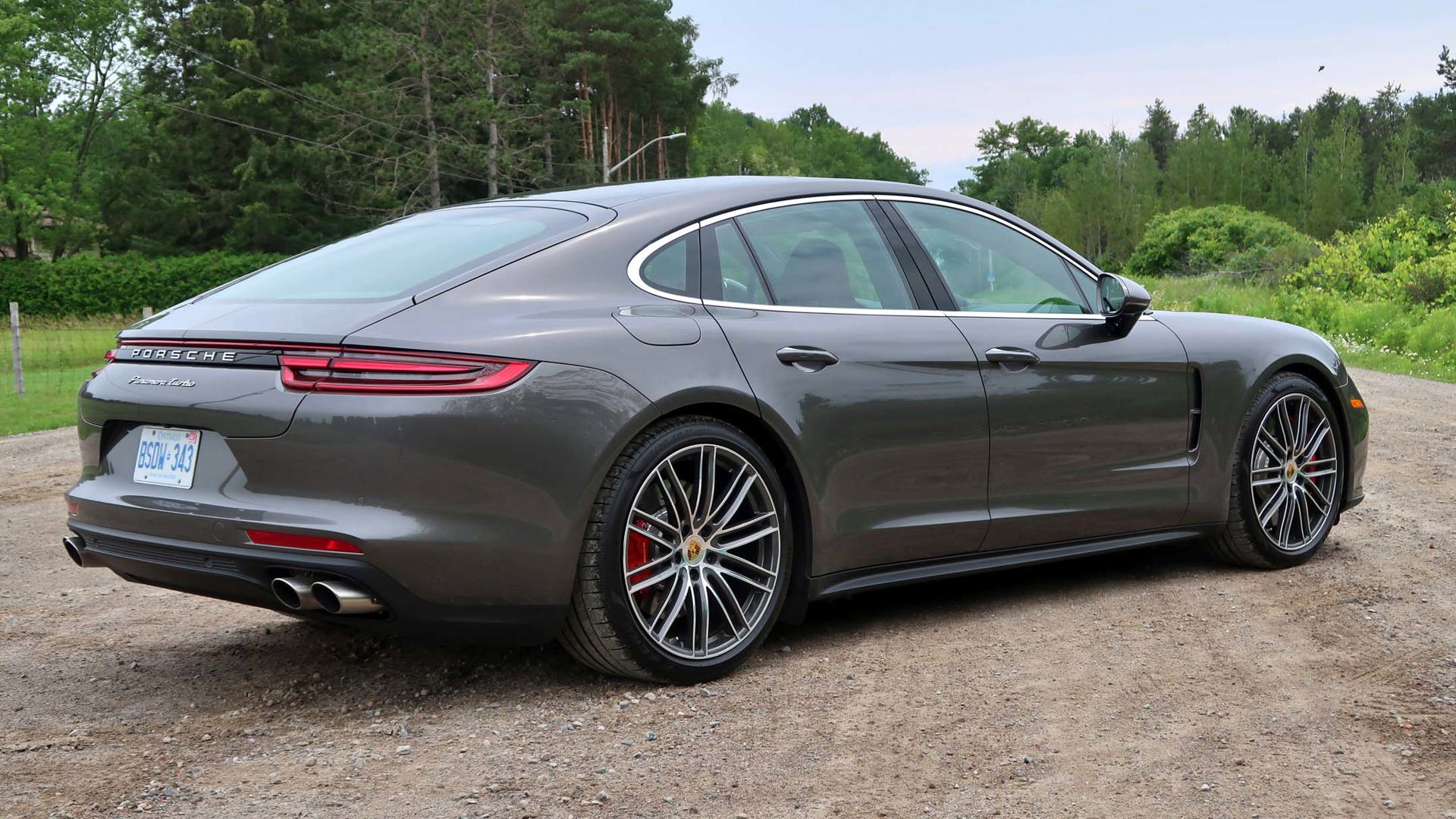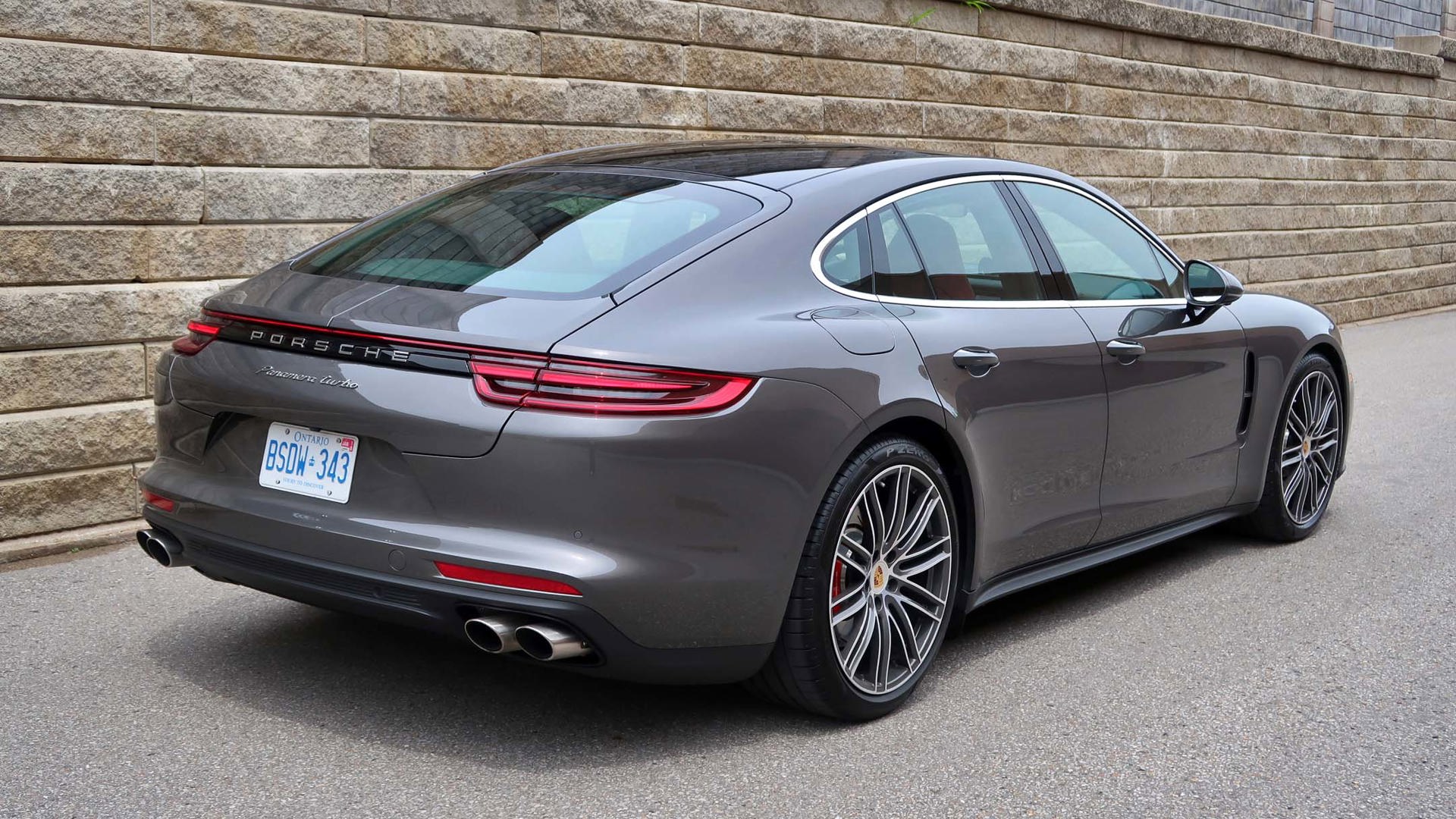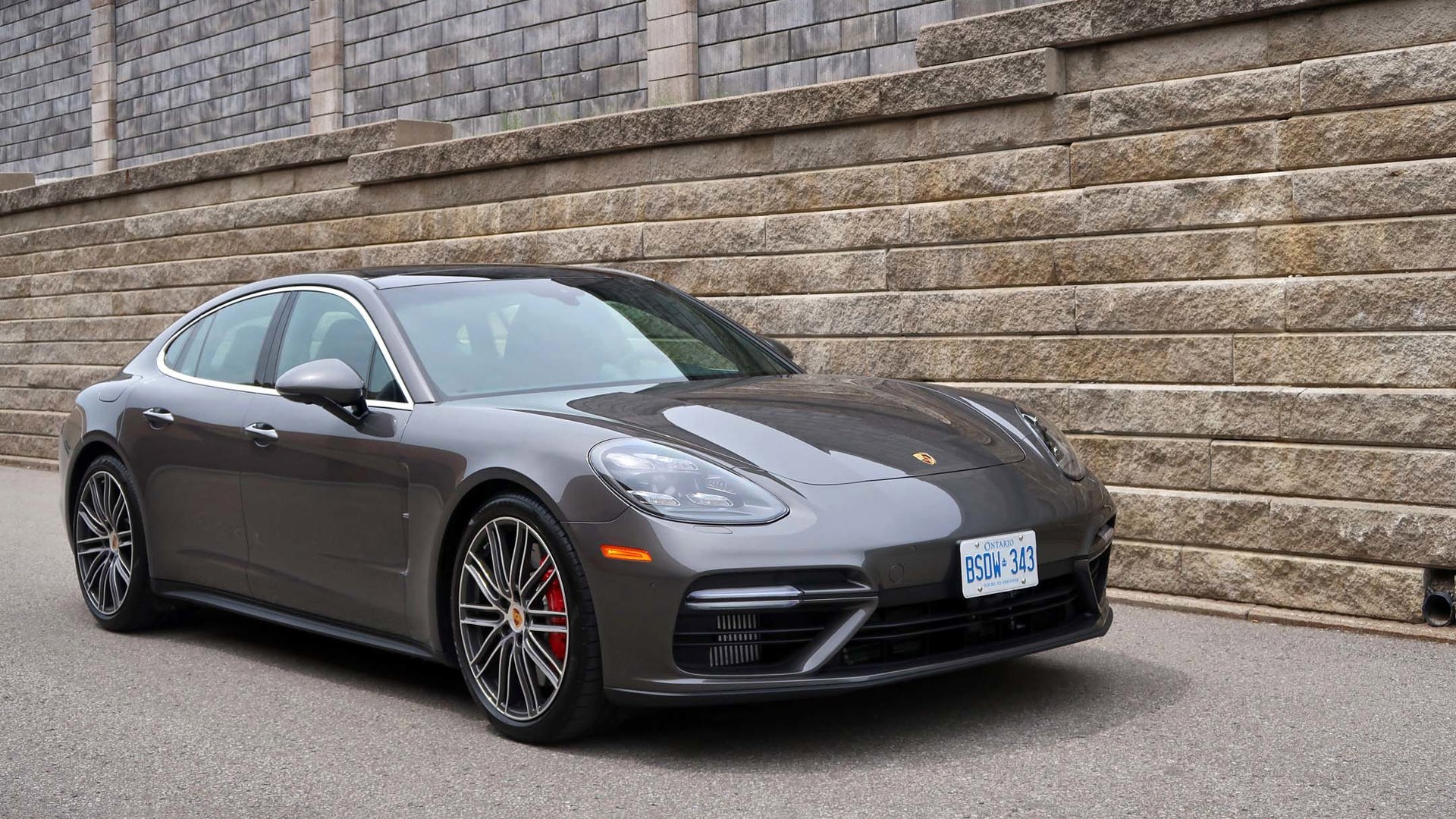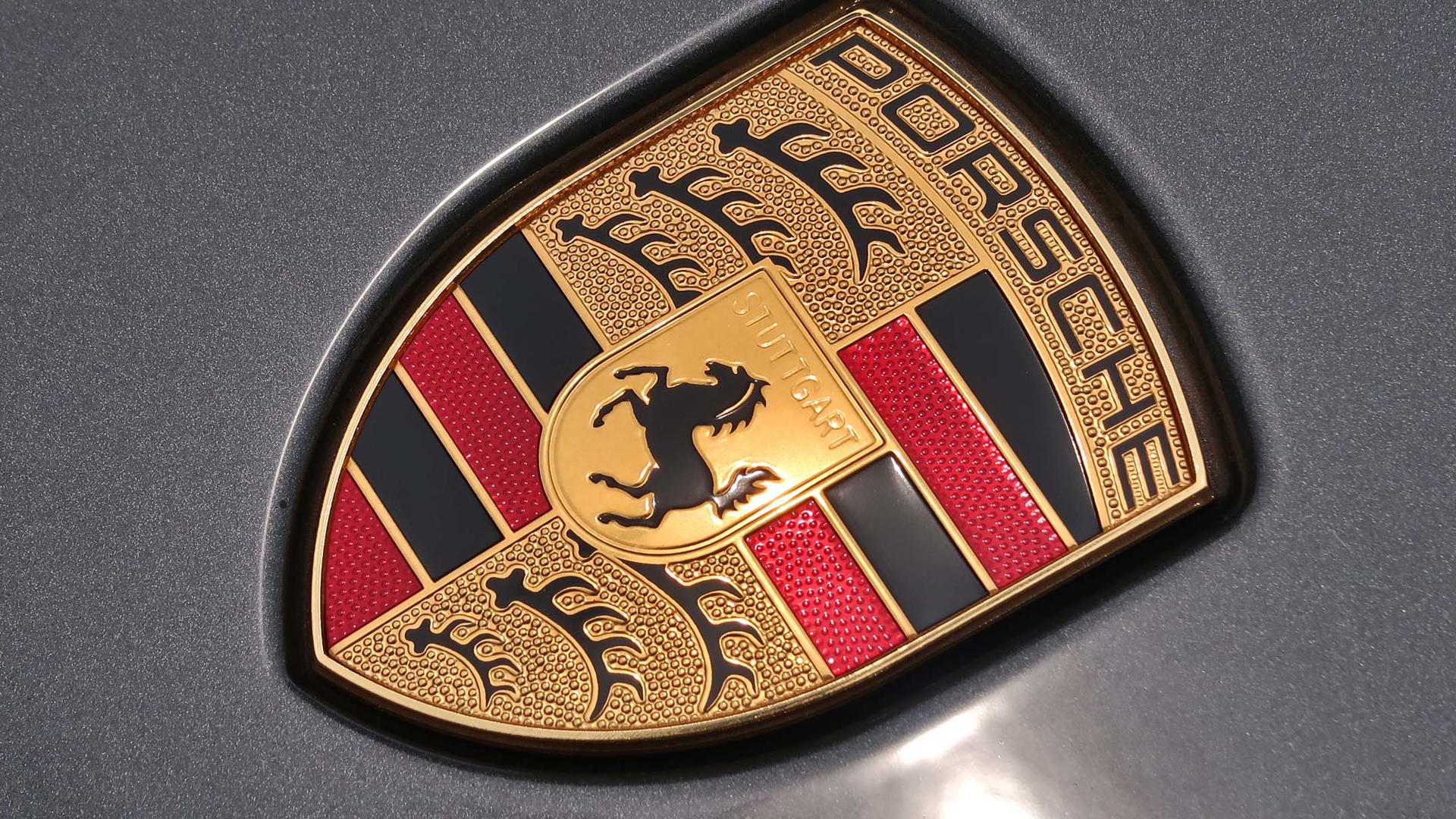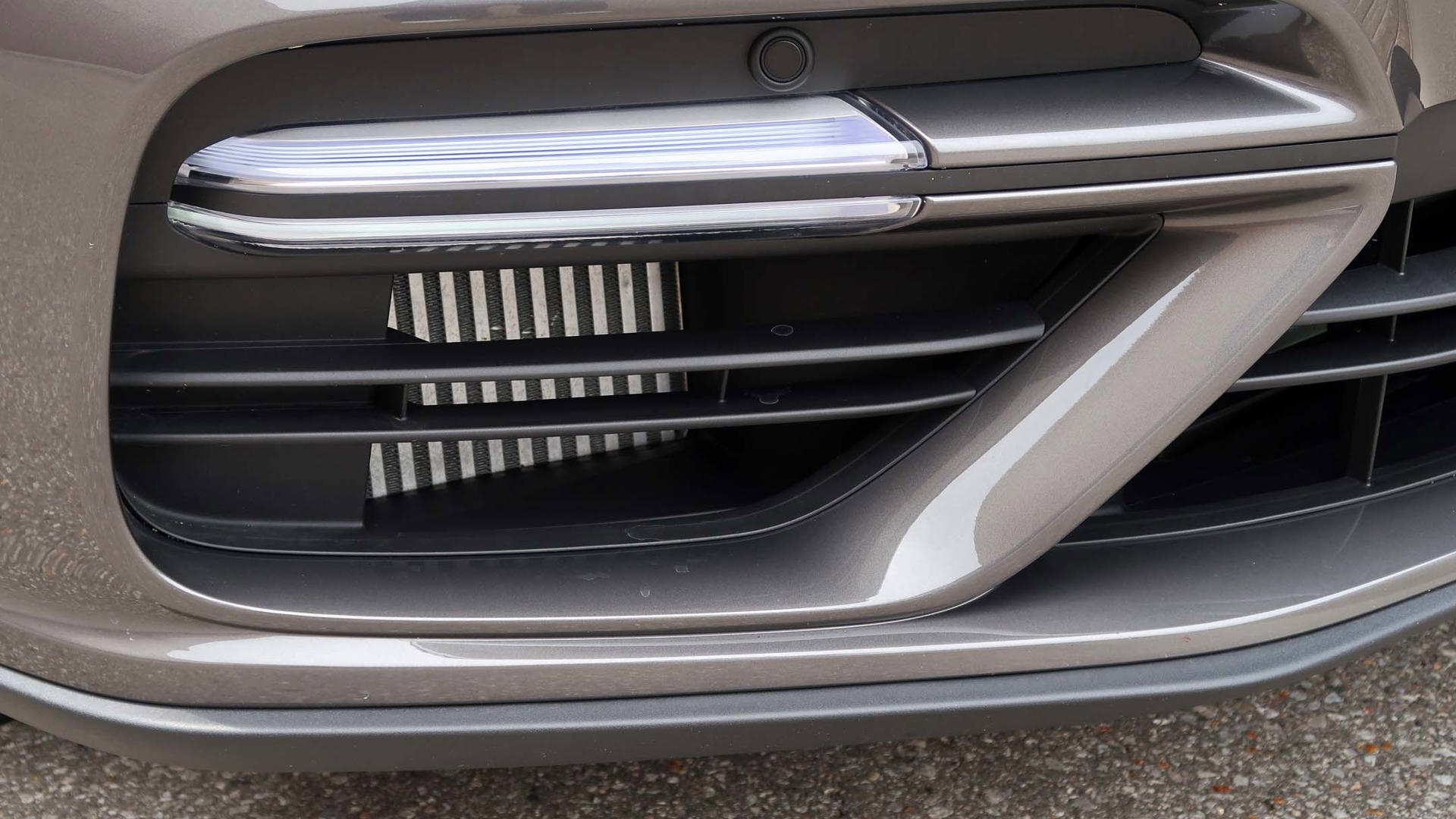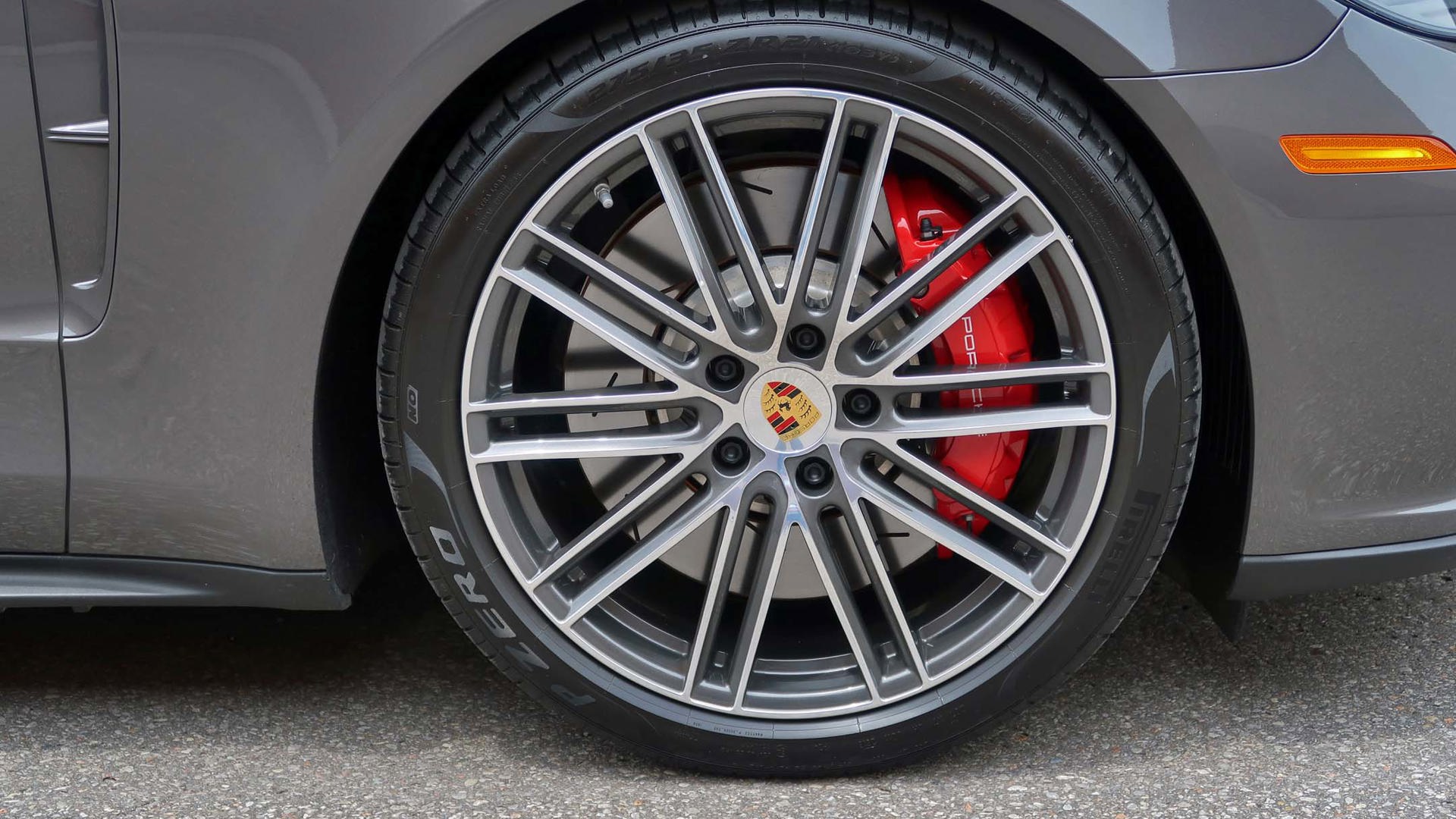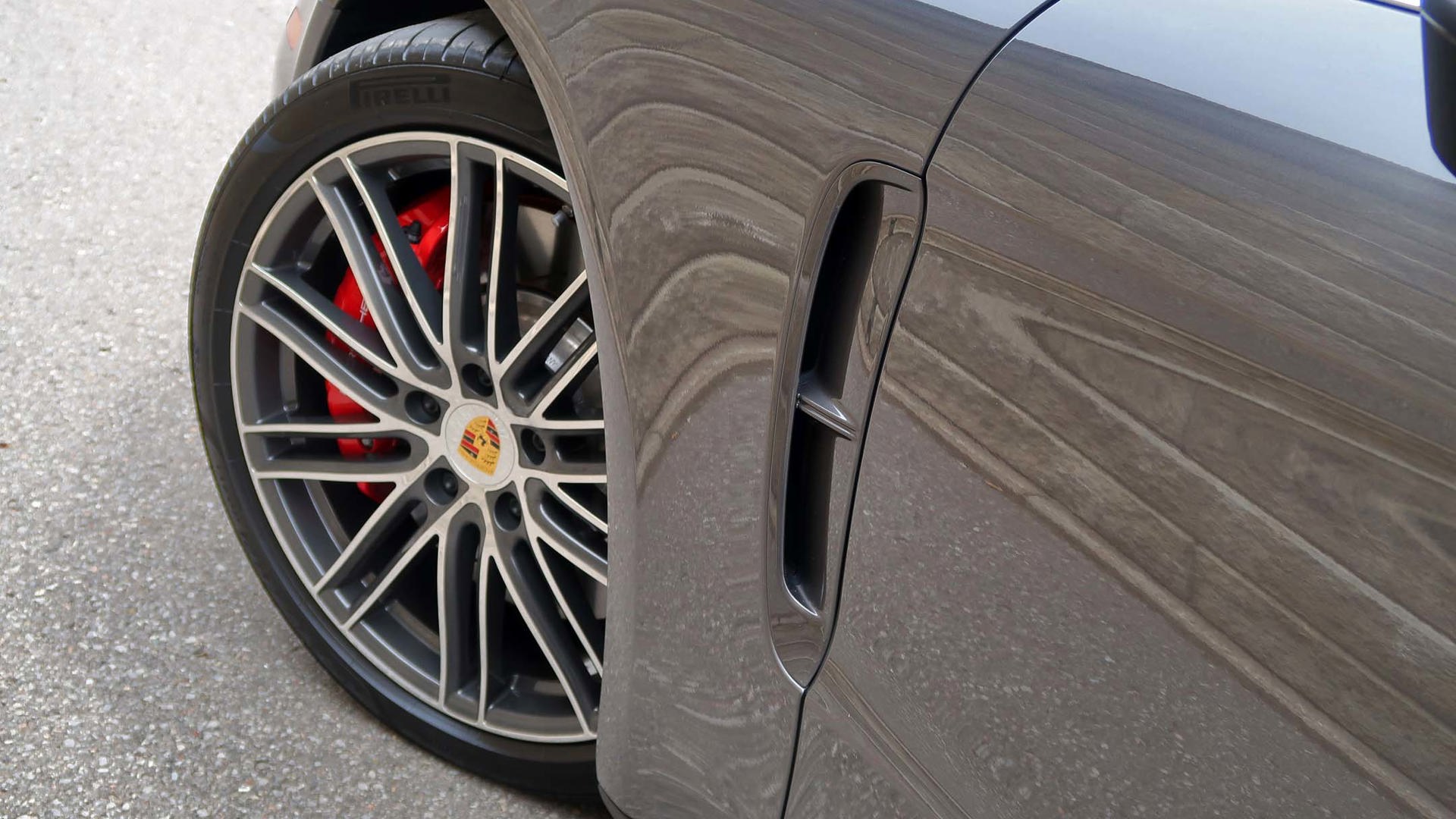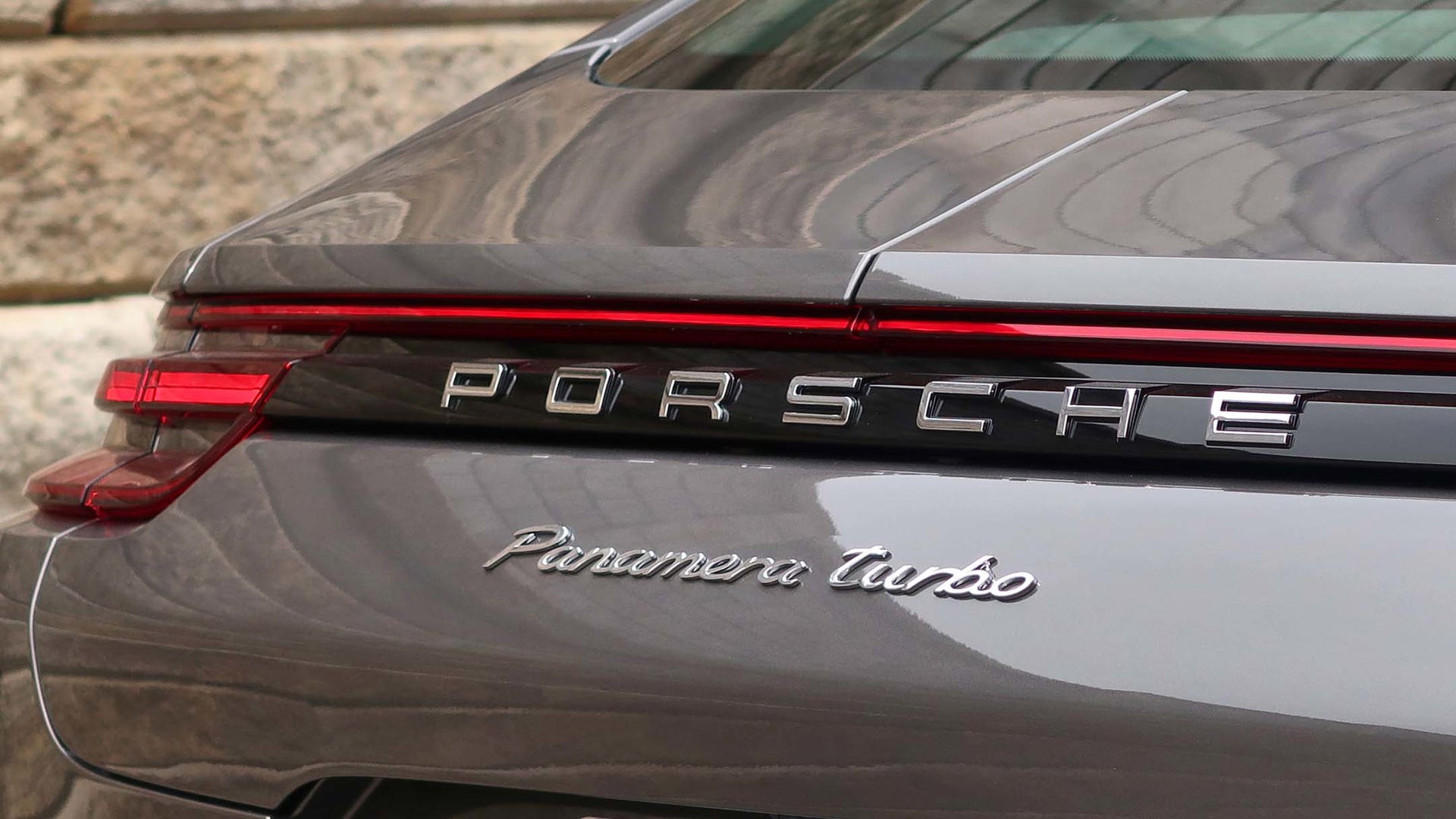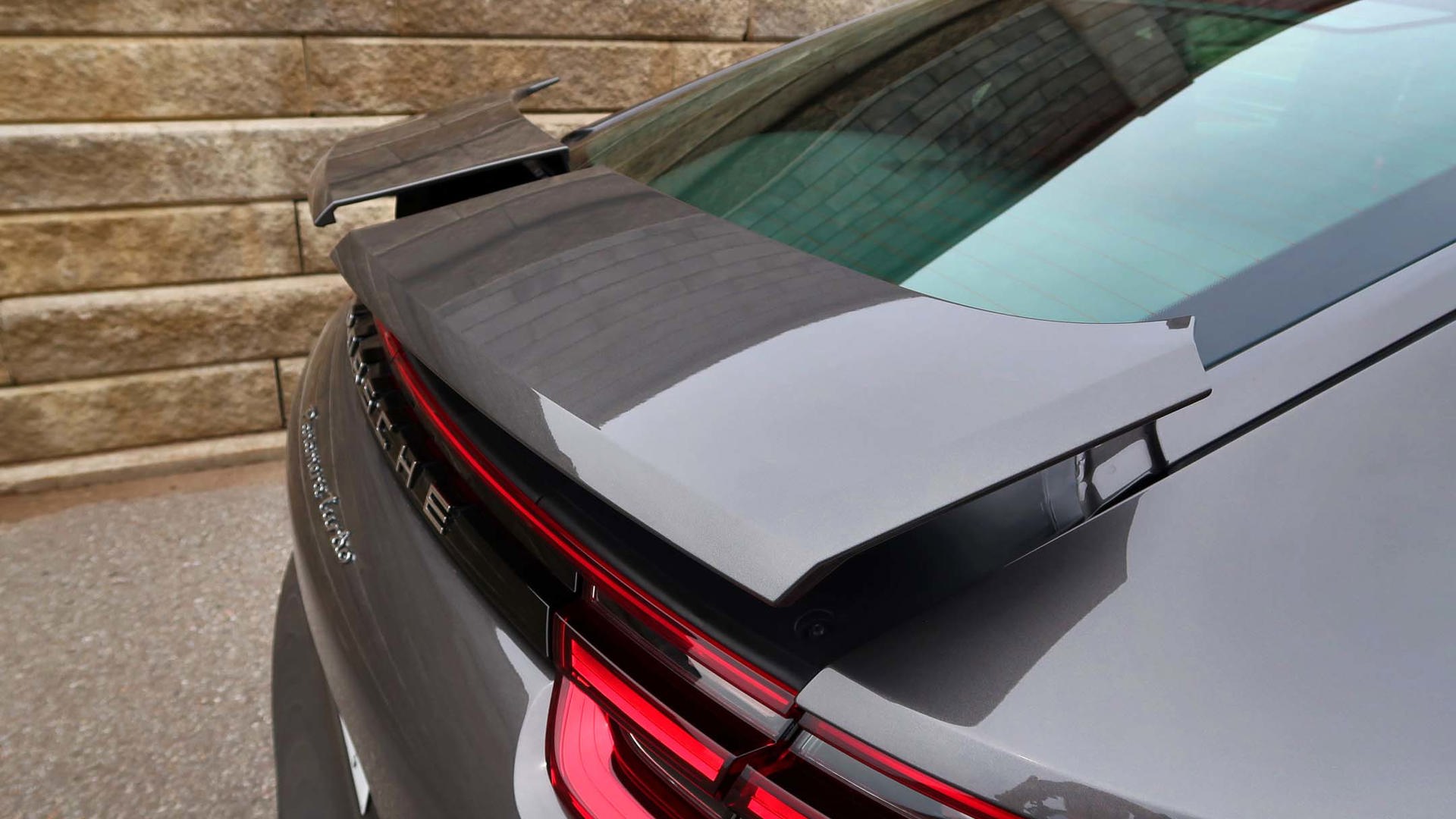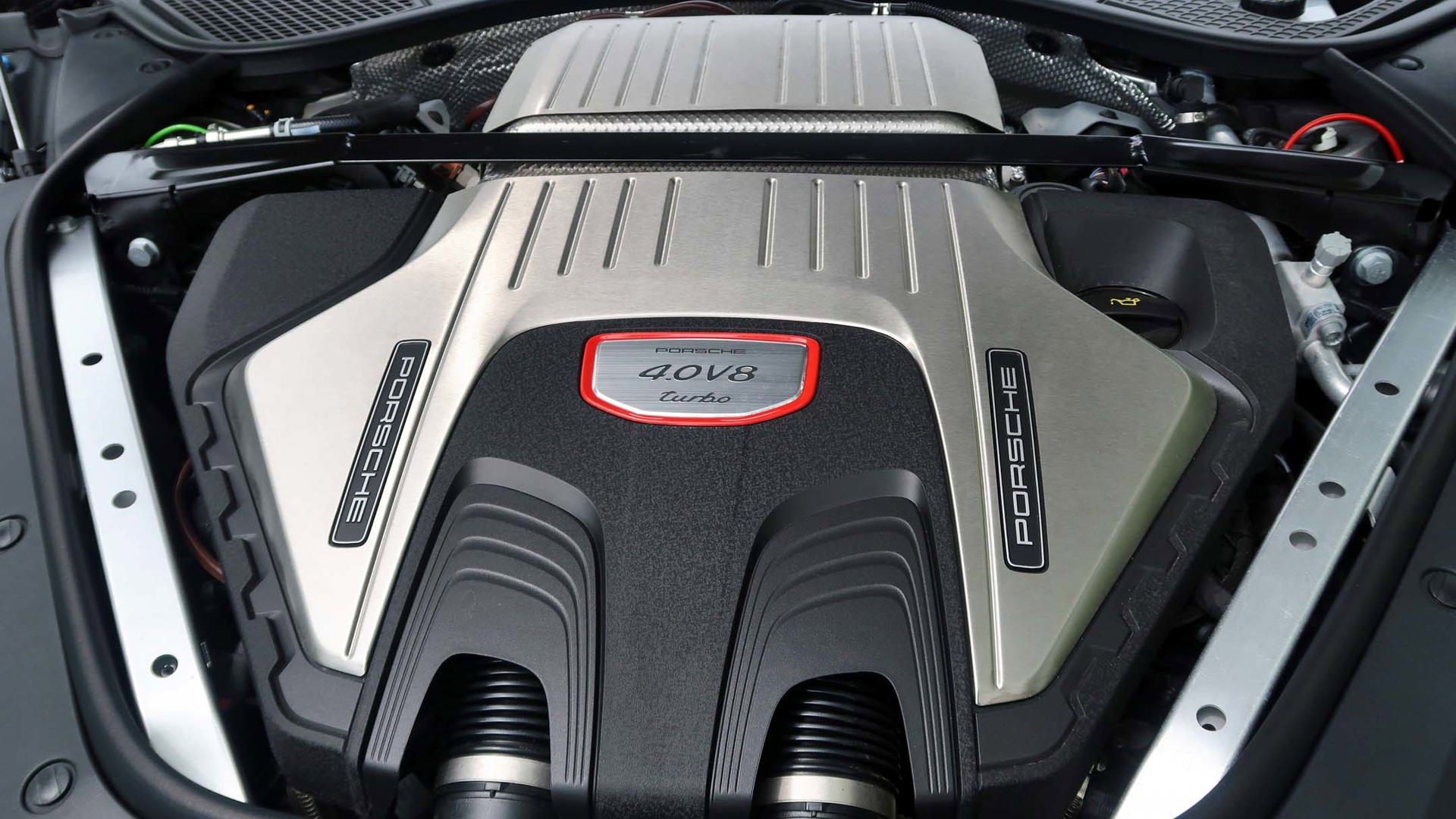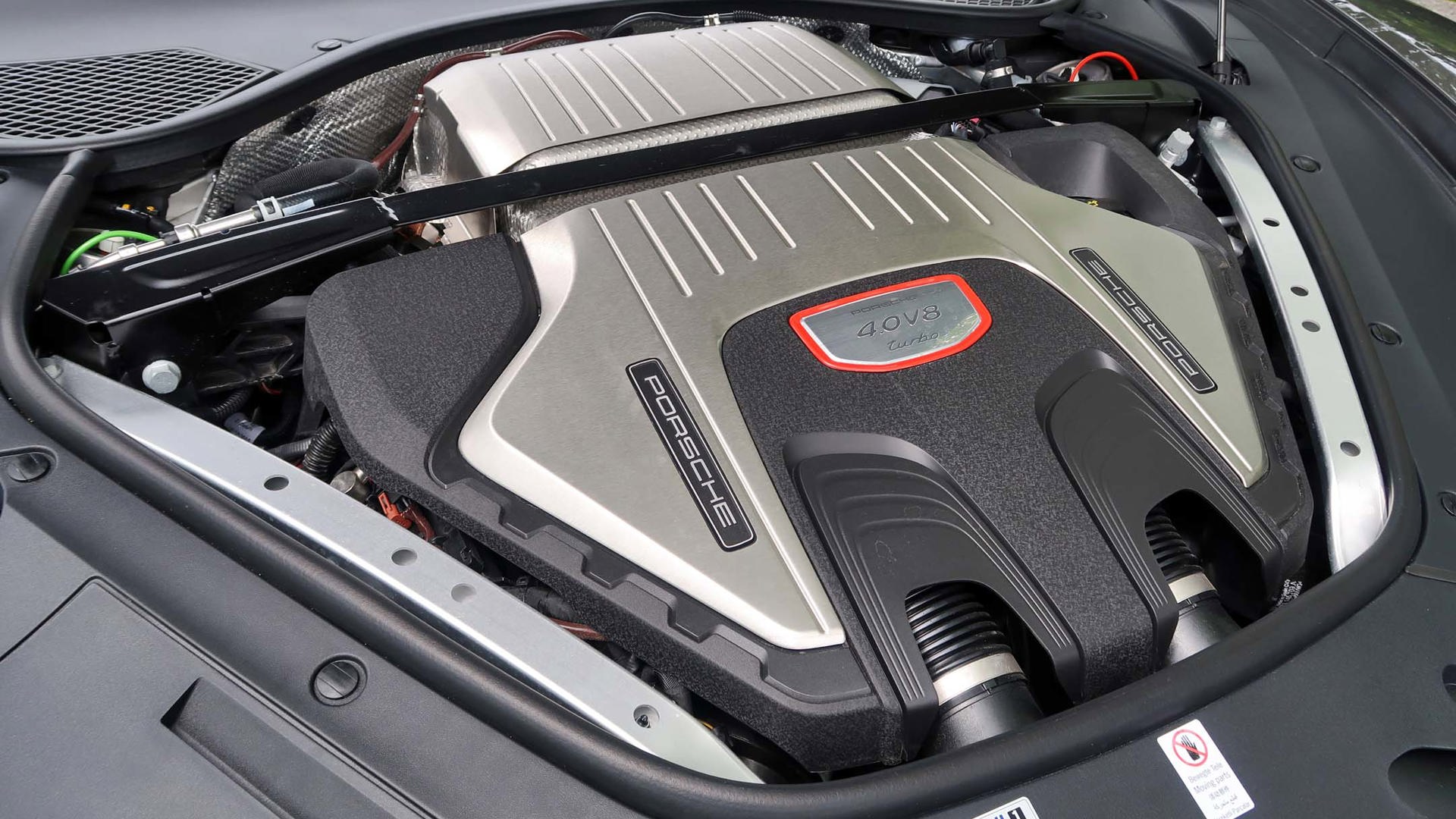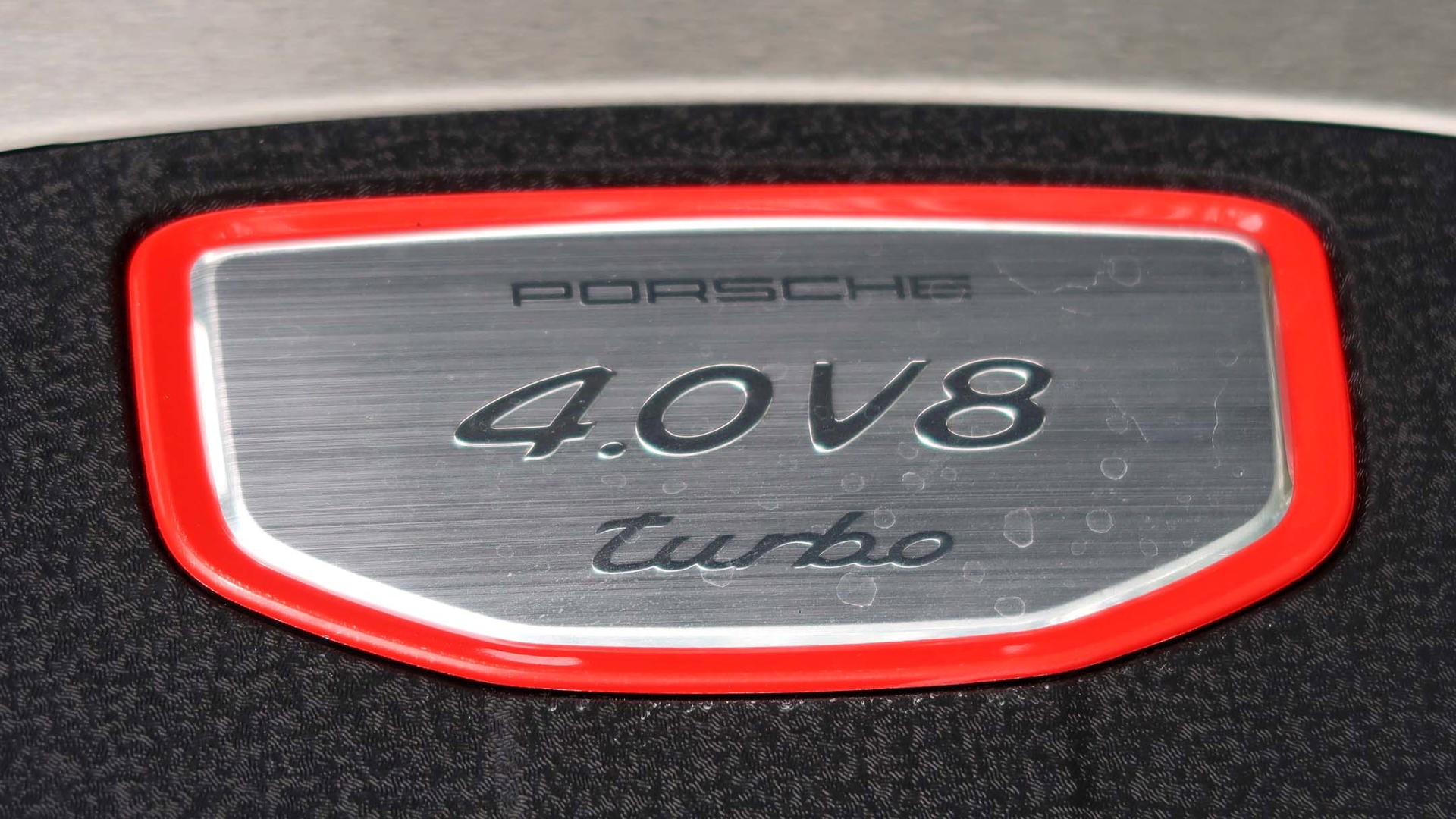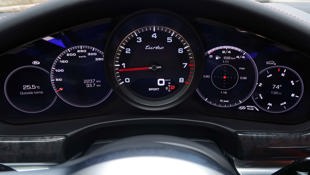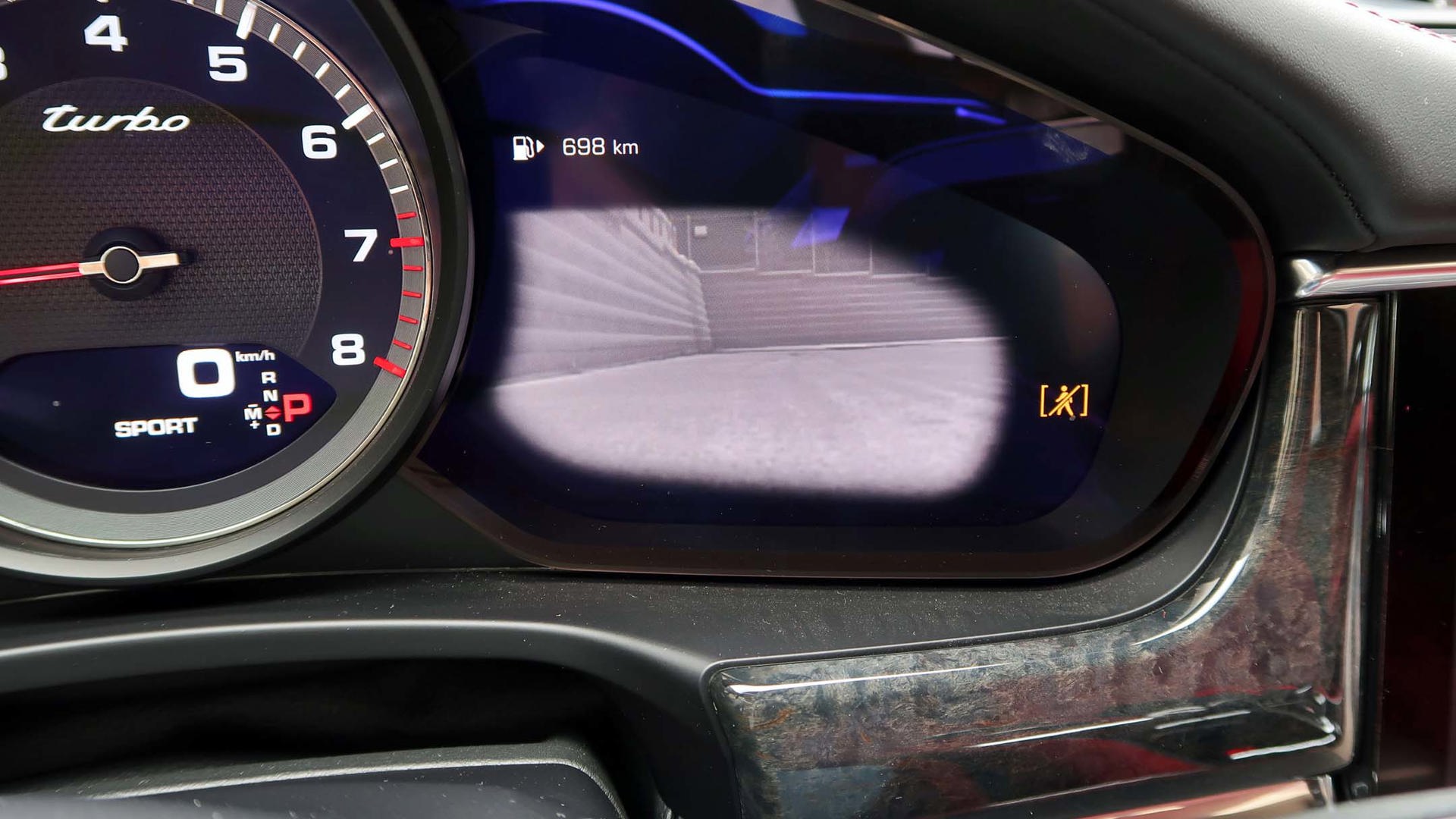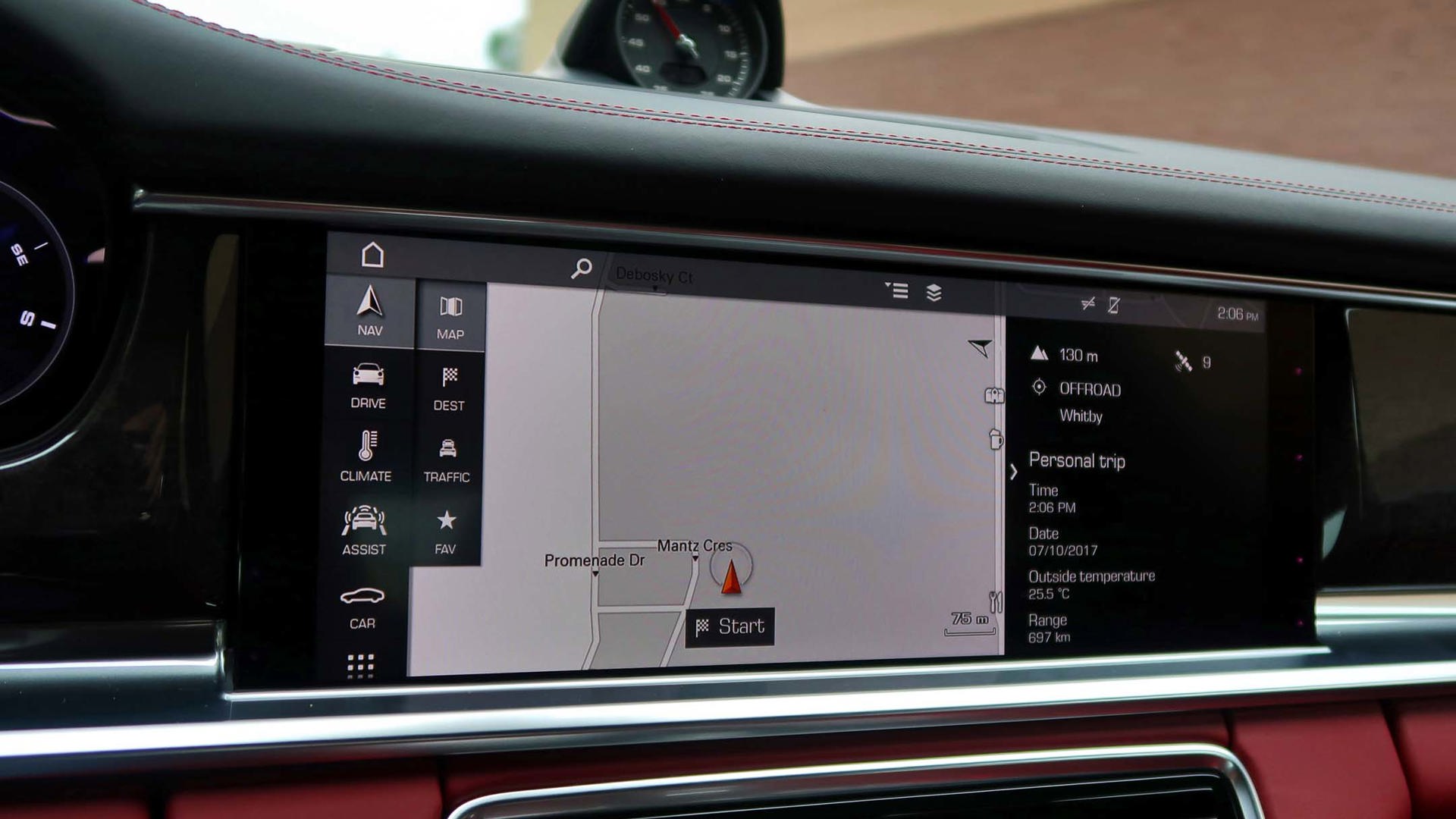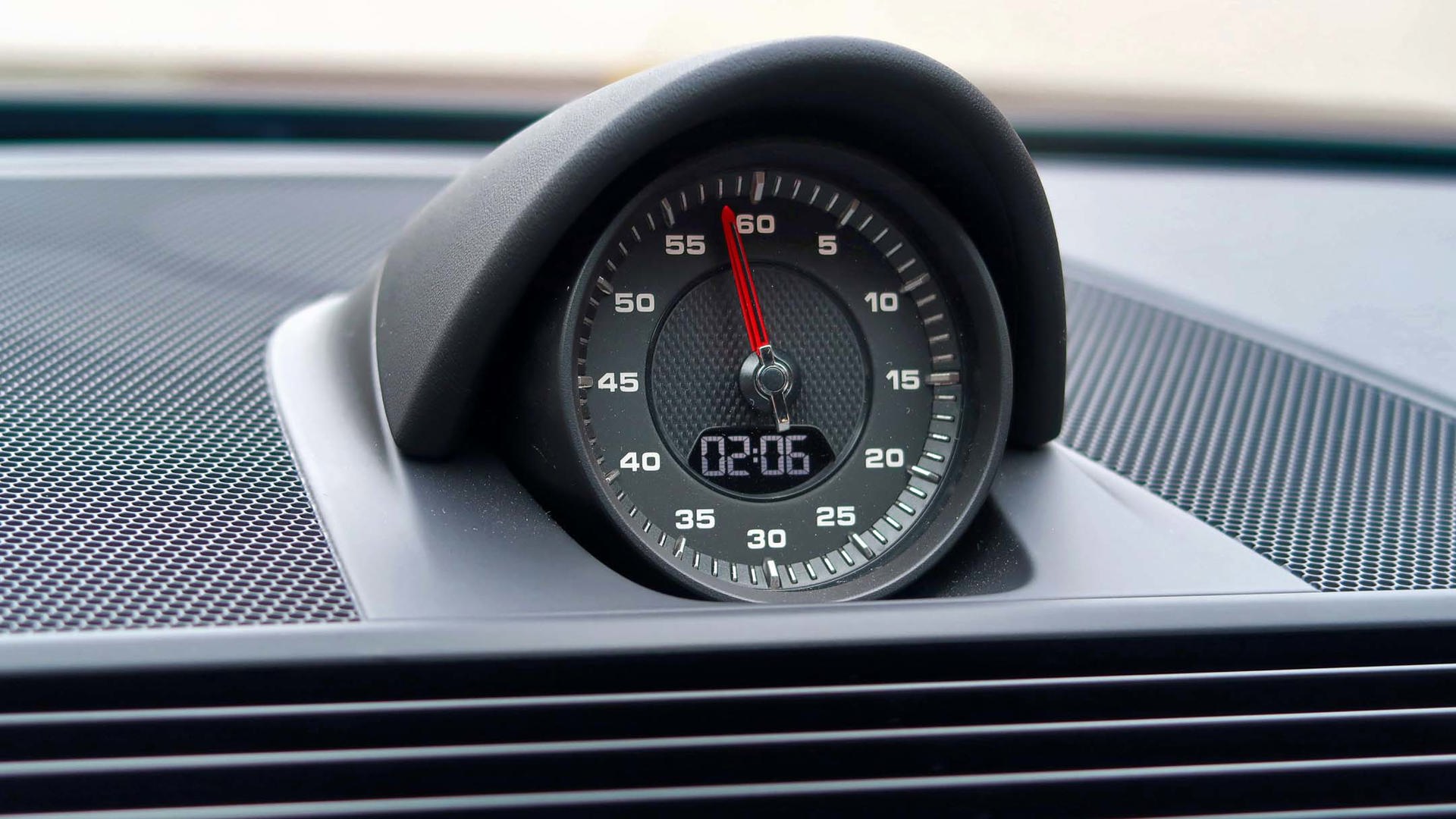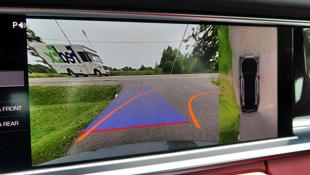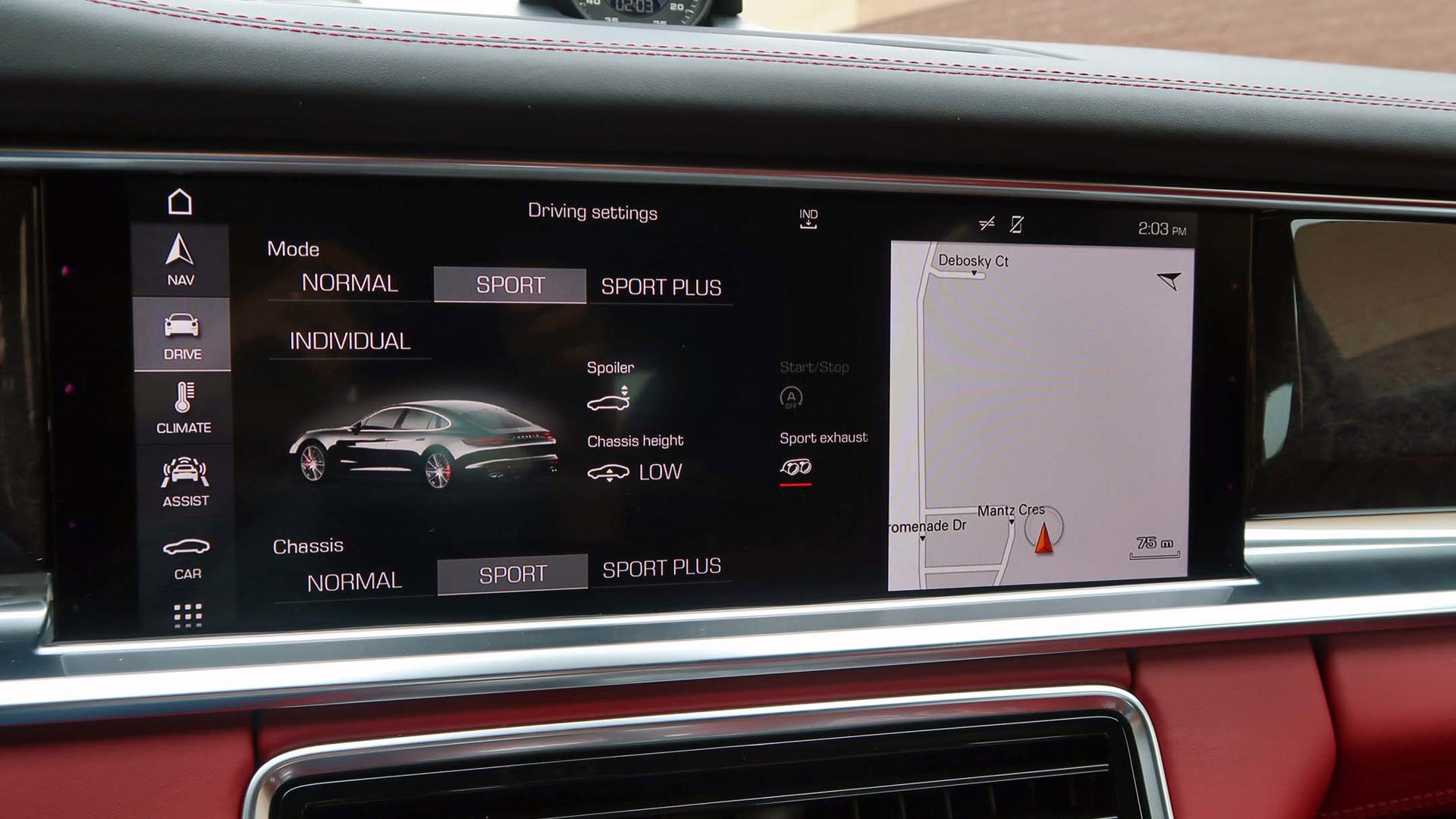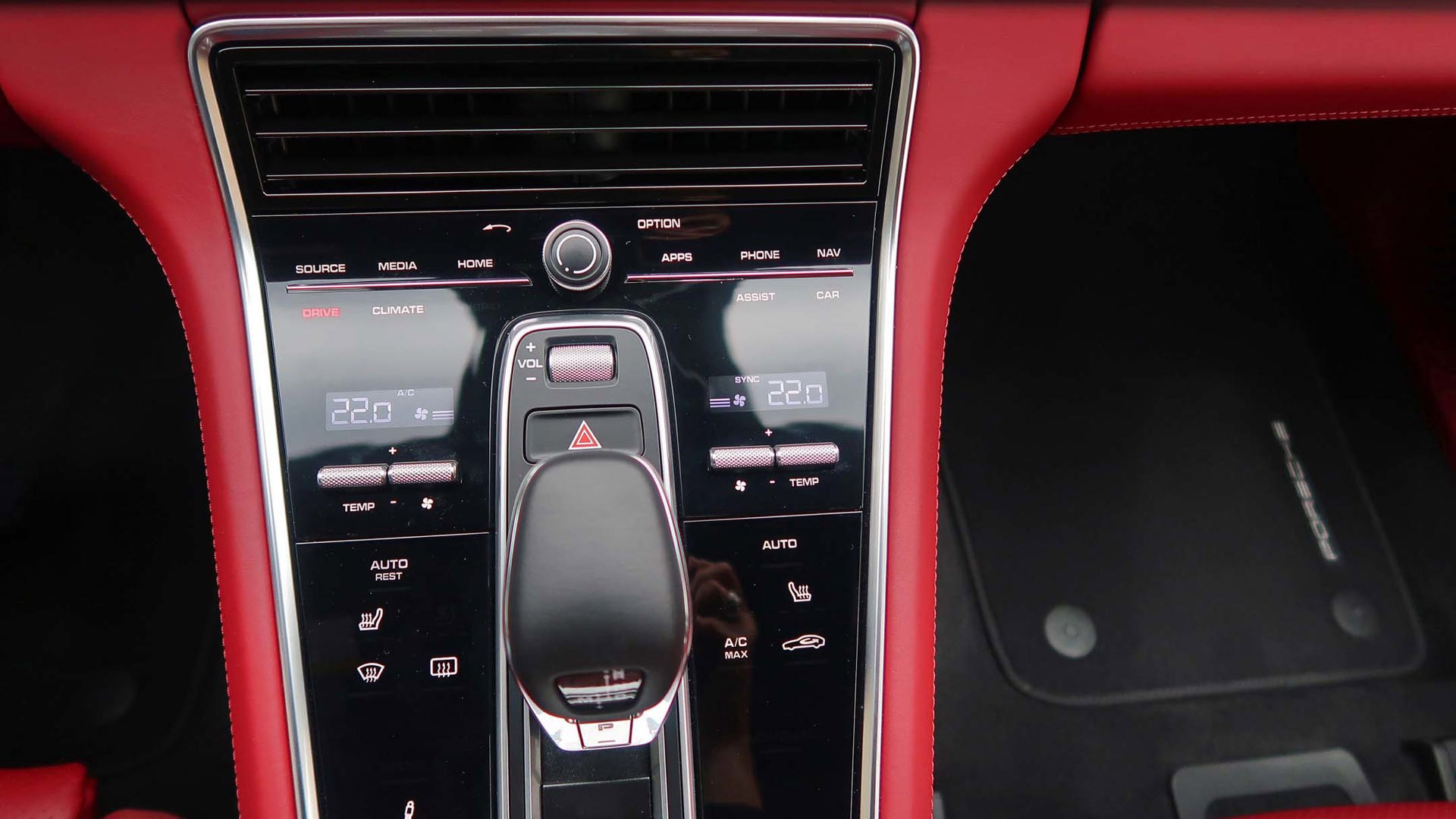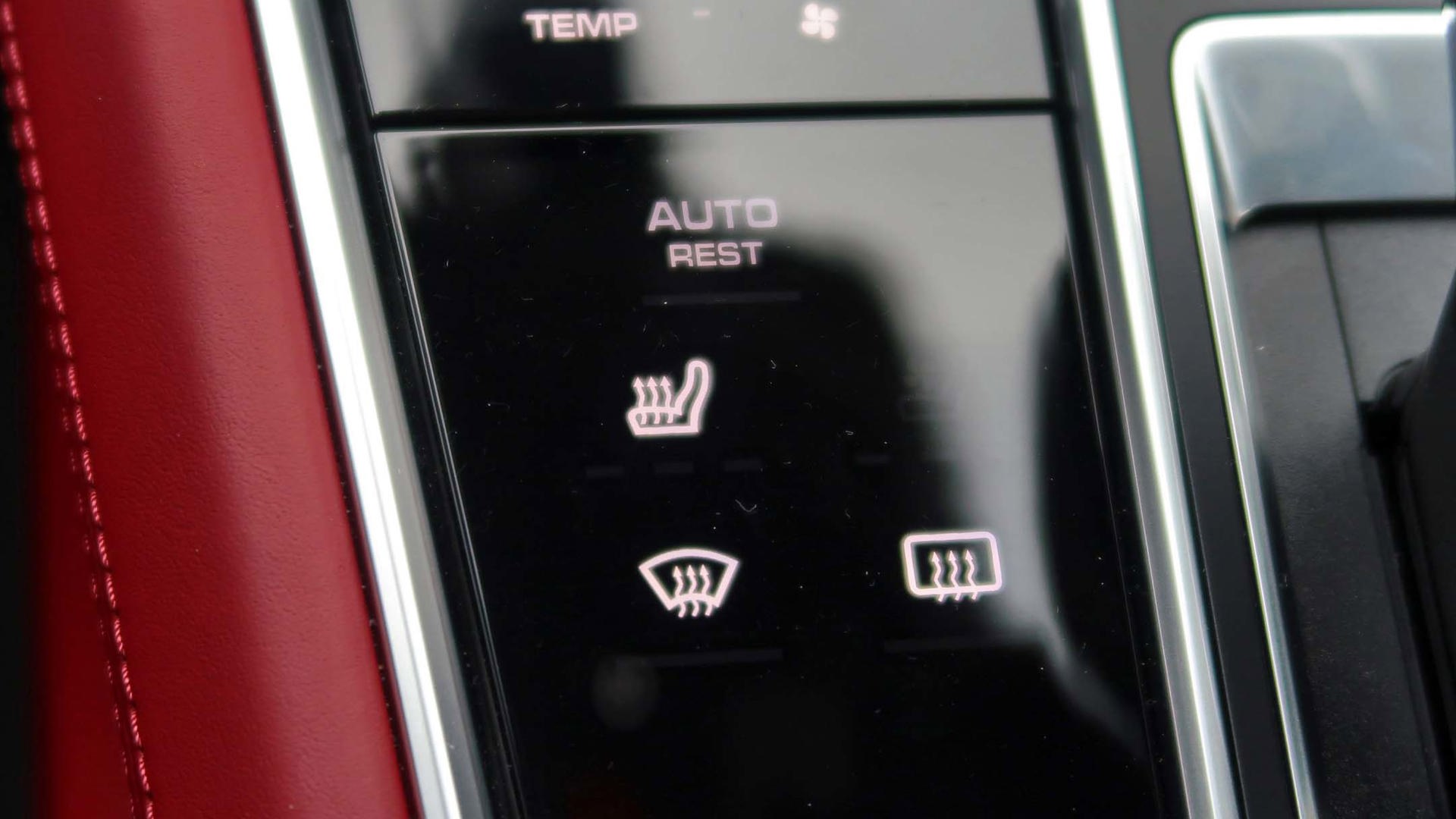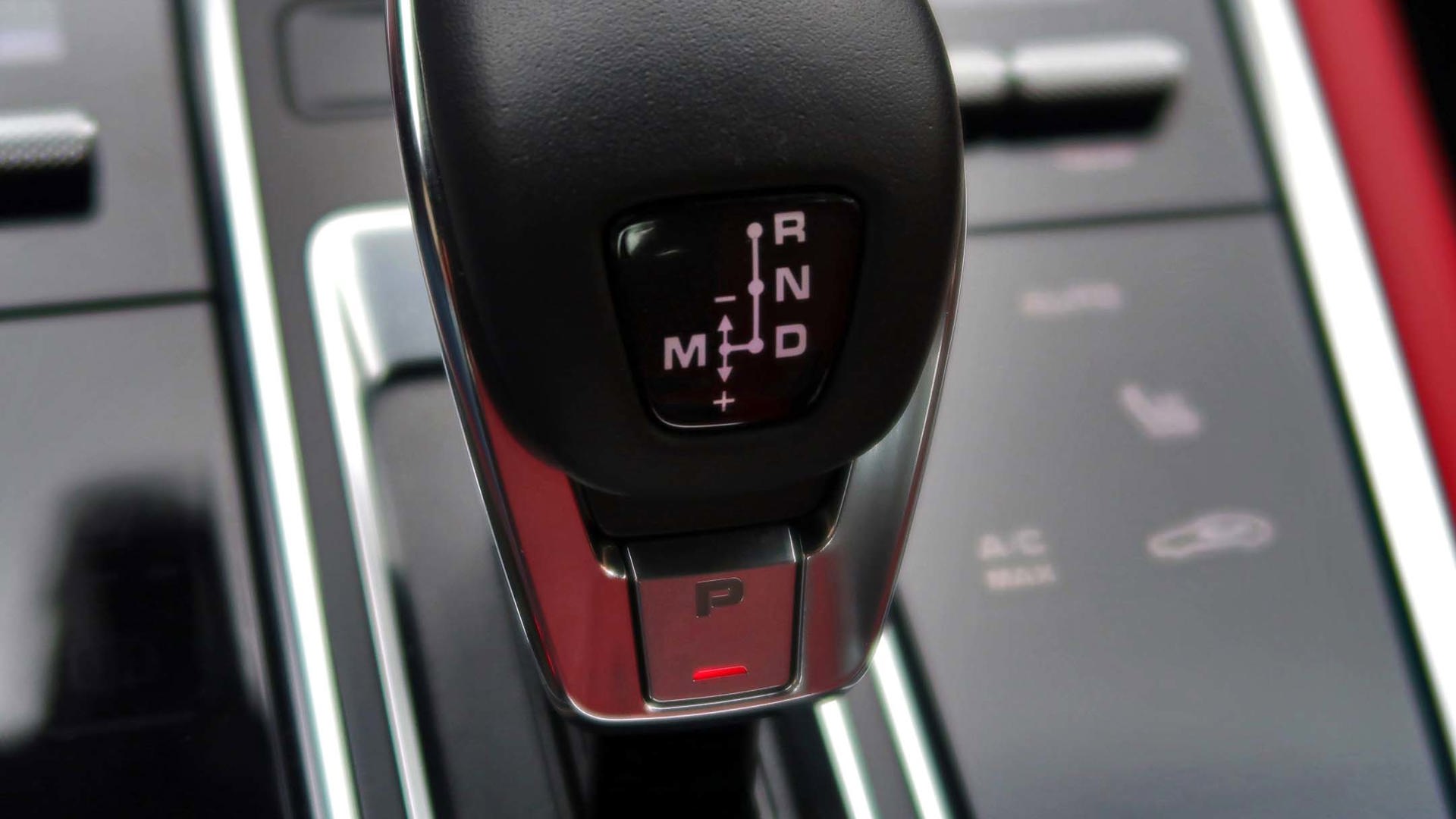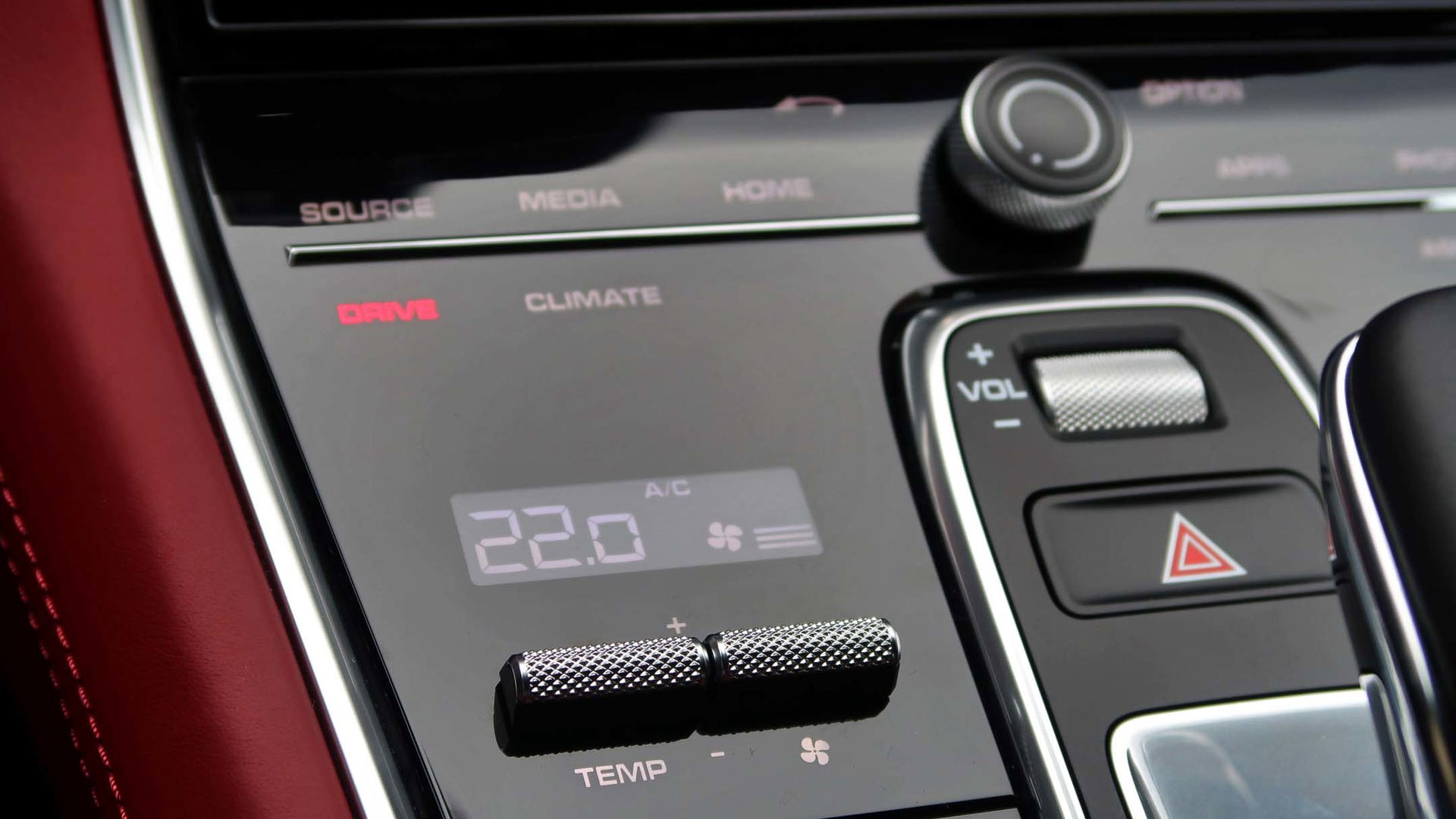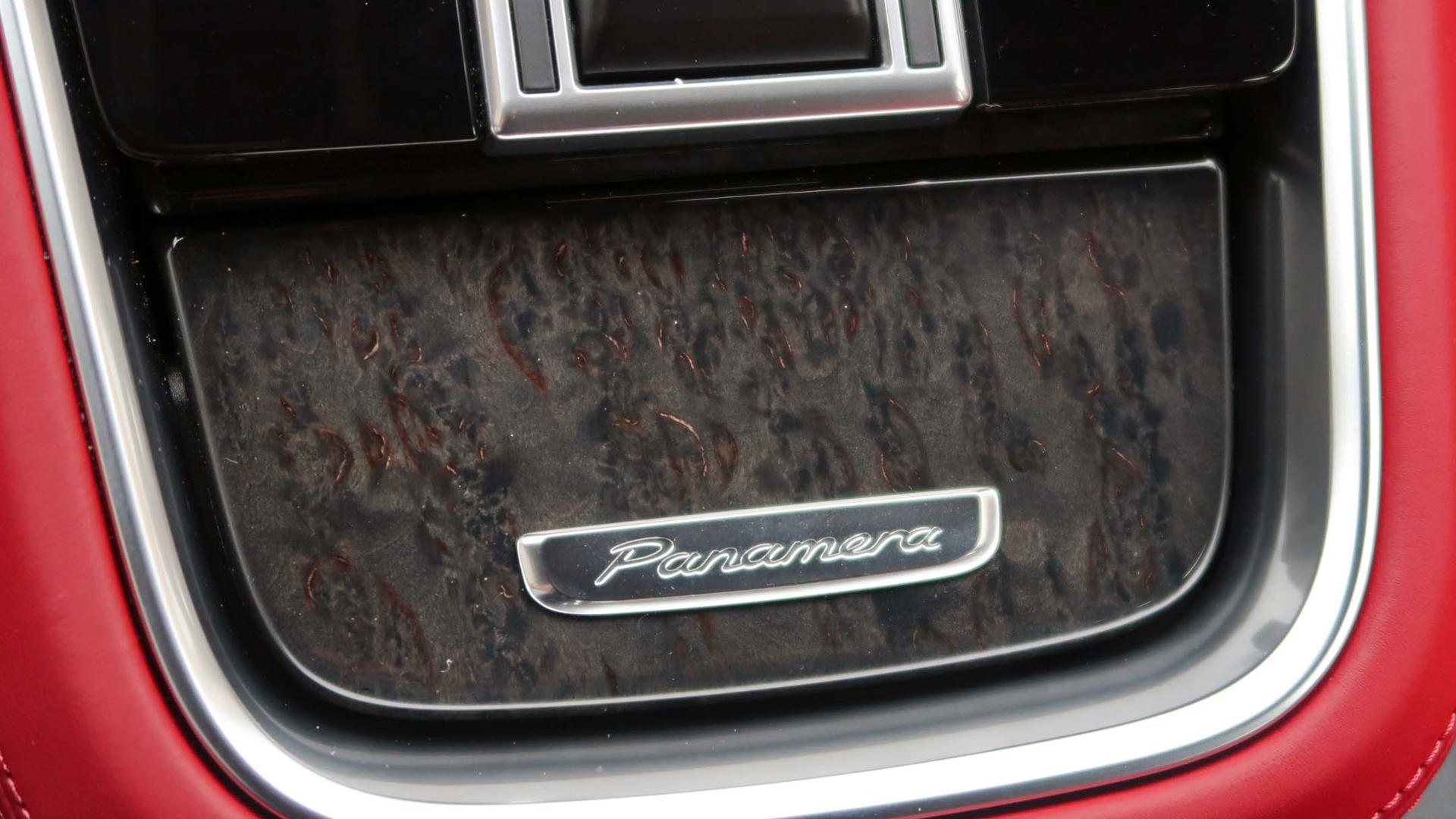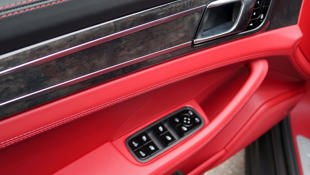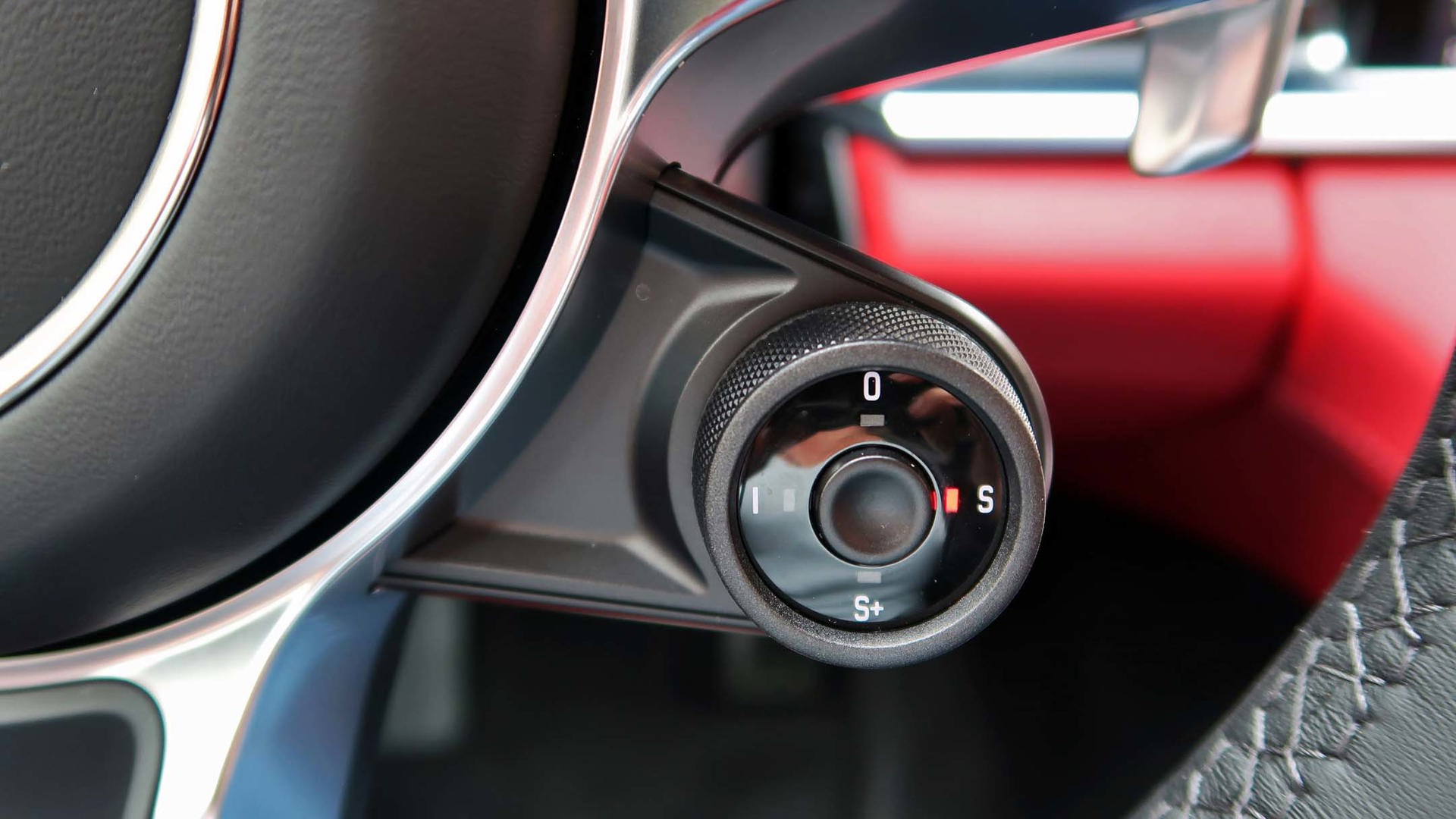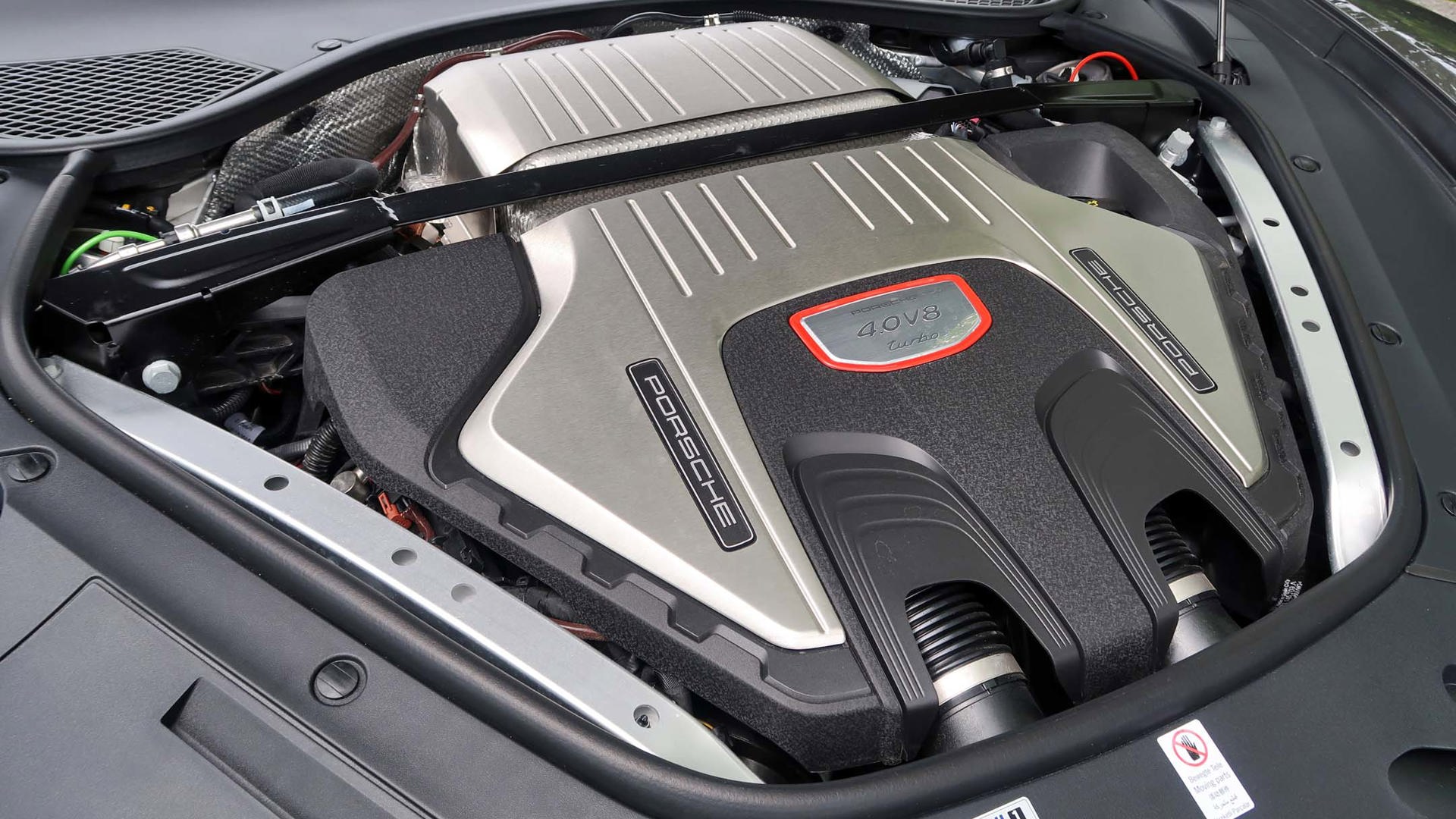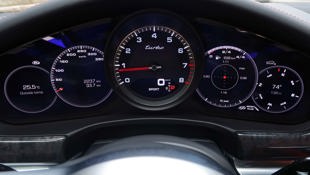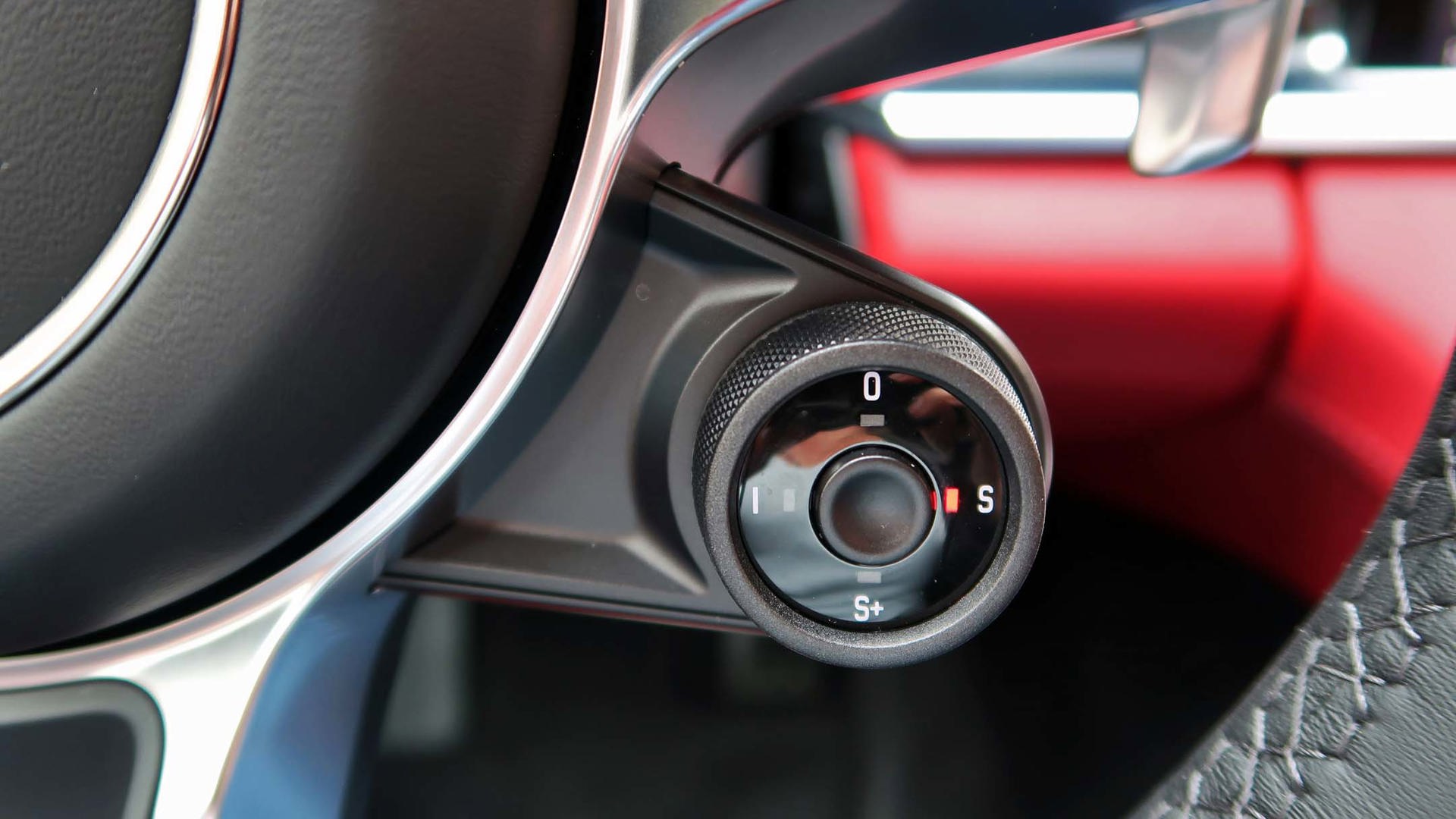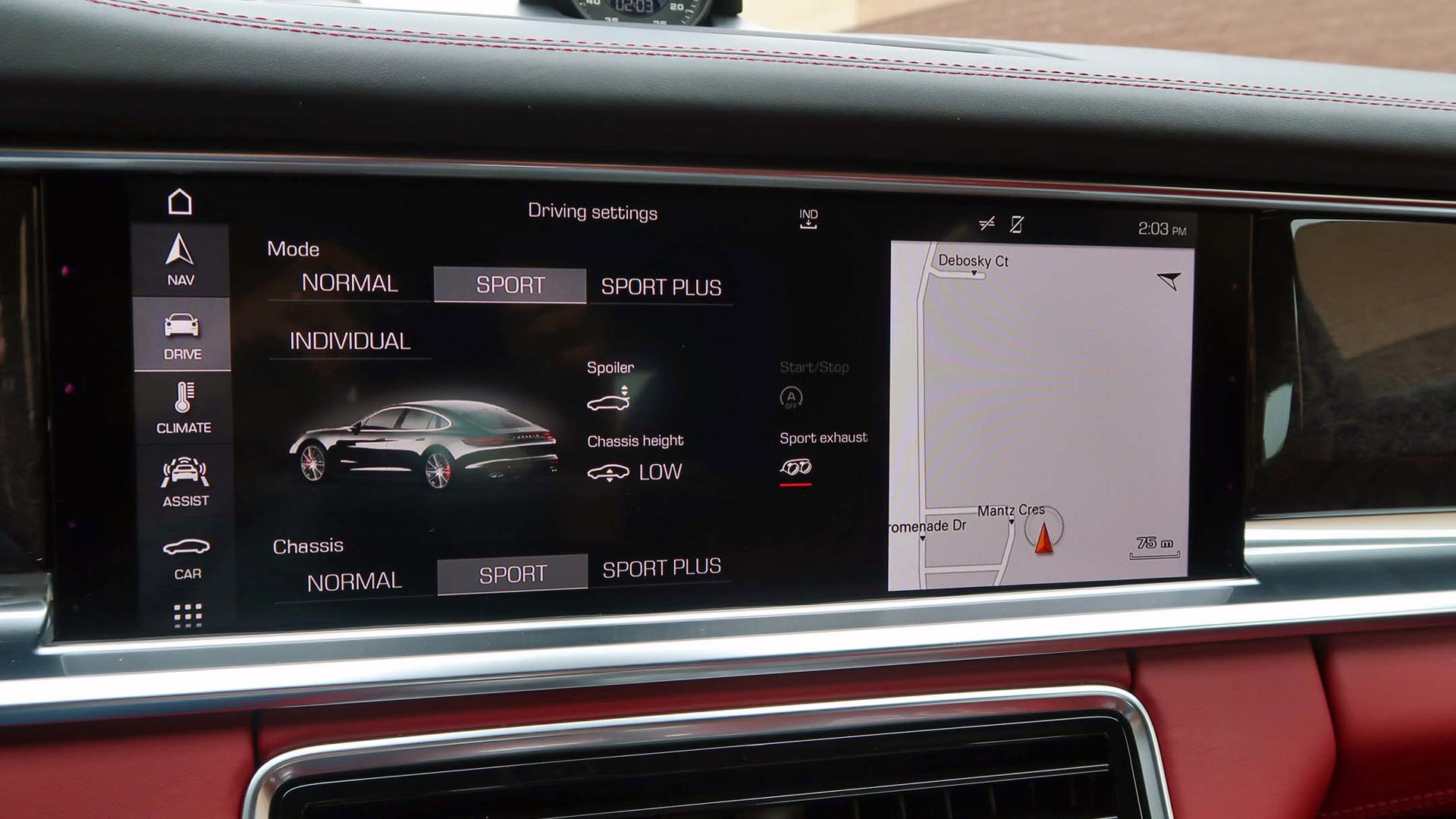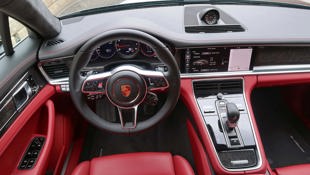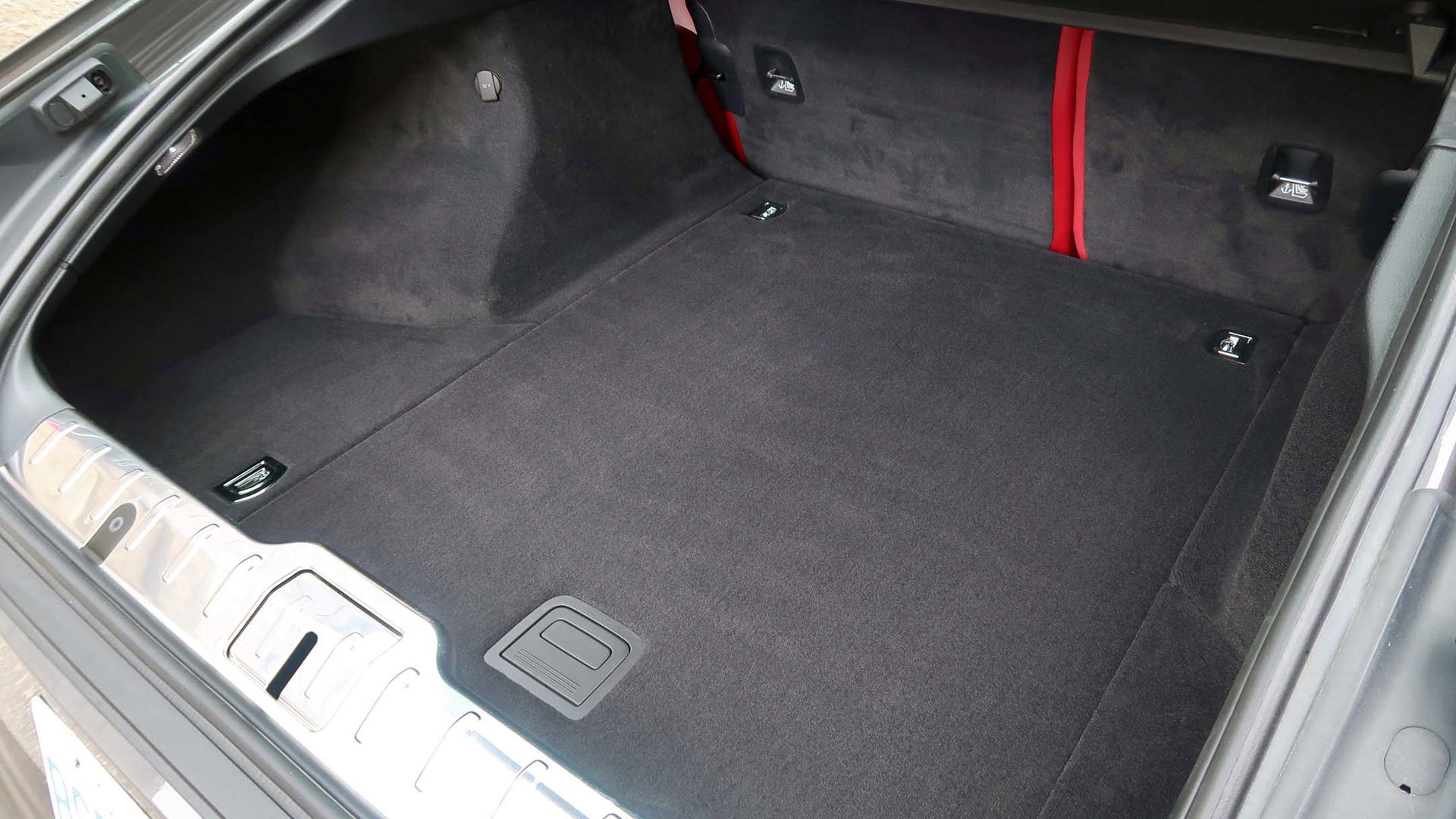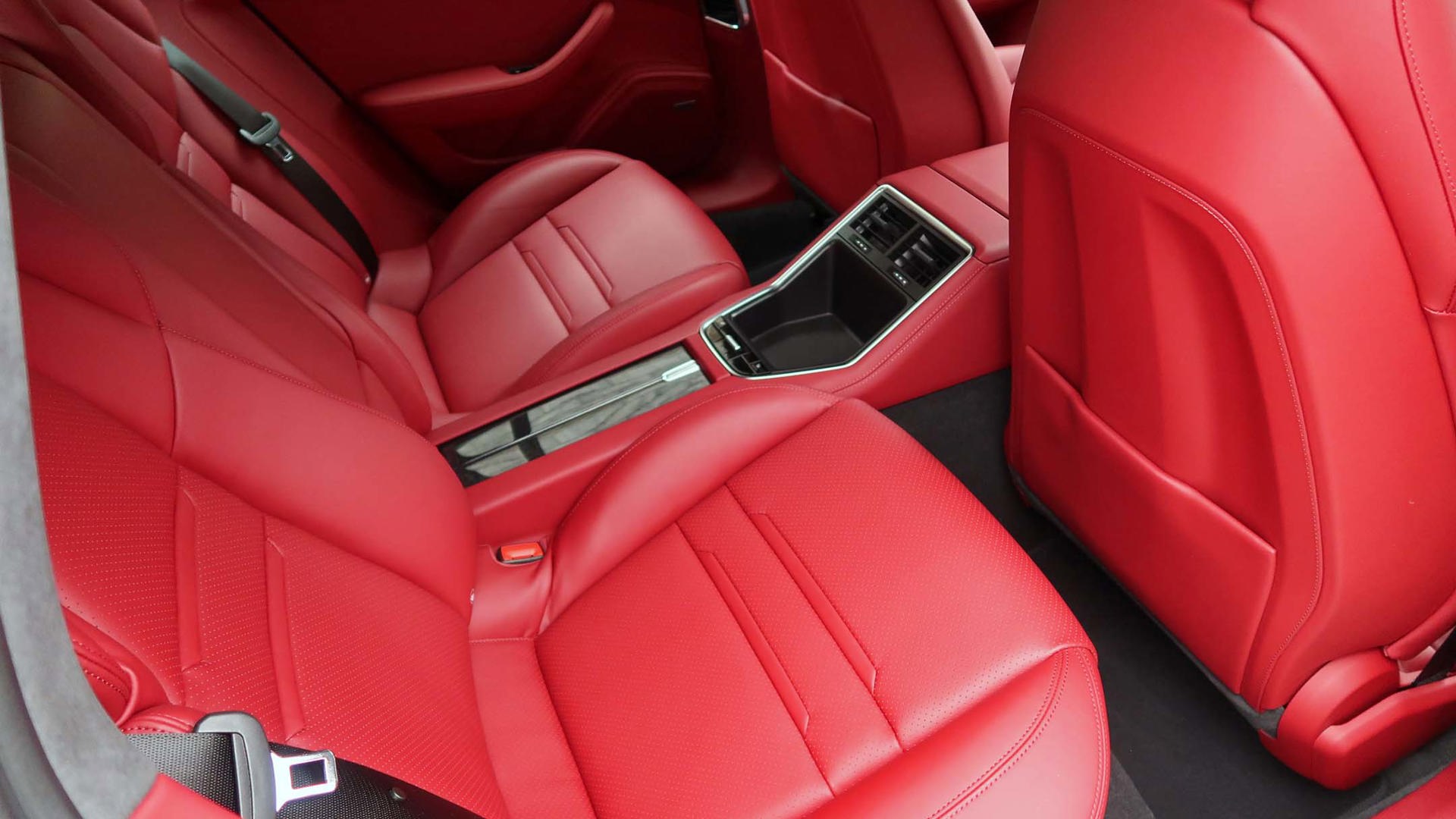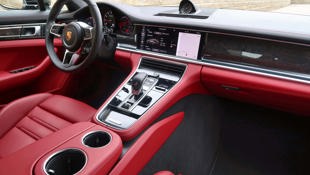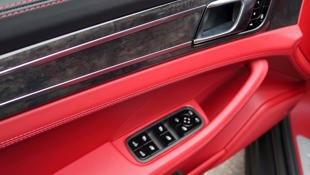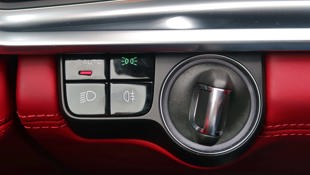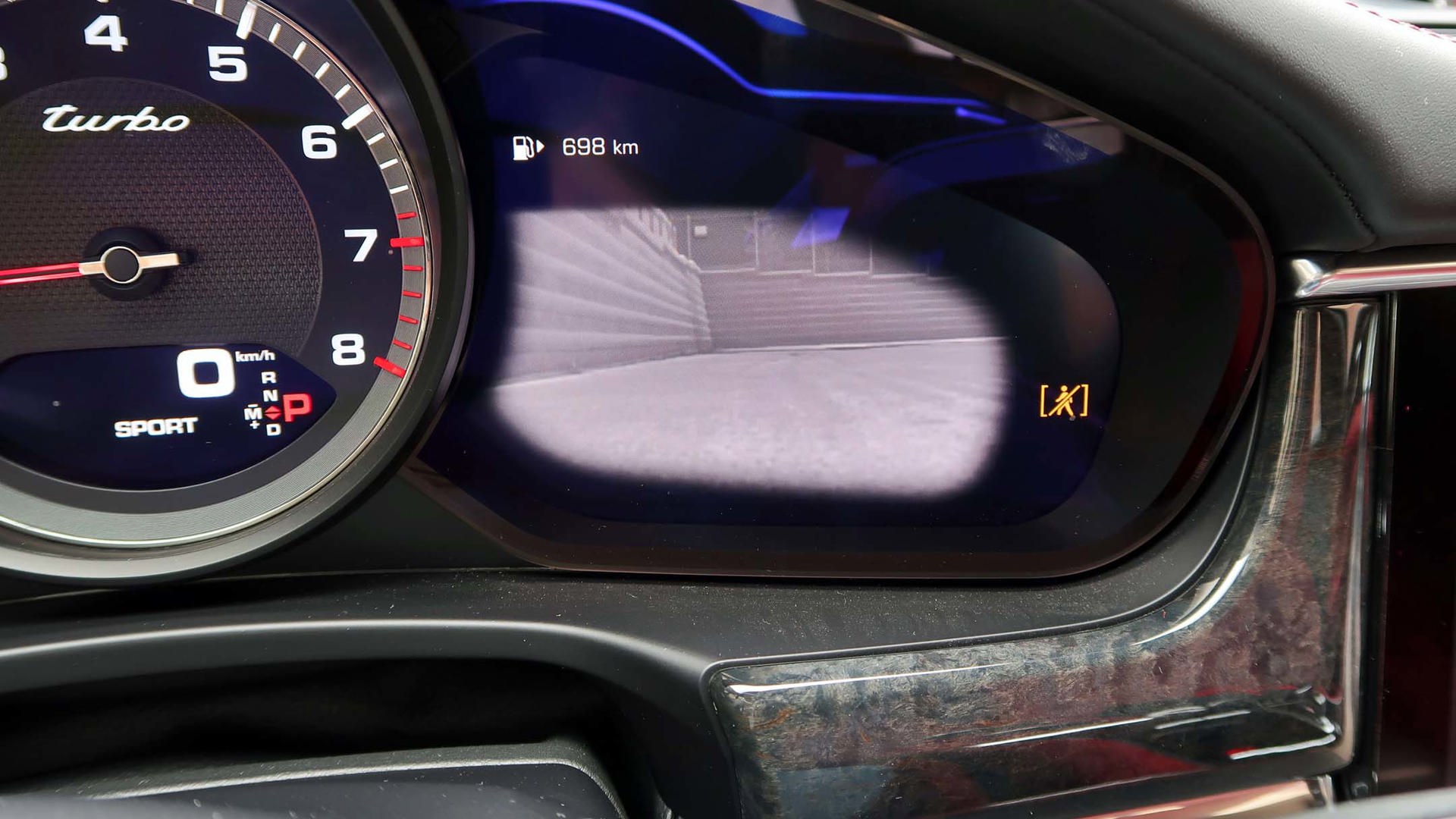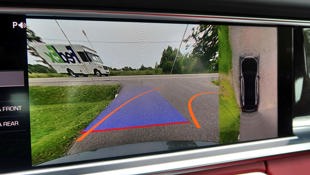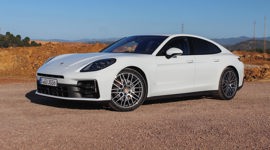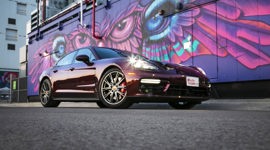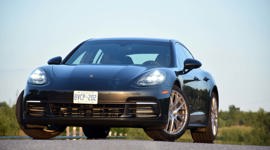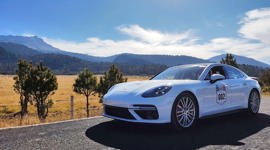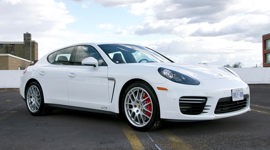 AutoTrader SCORE
AutoTrader SCORE
-
STYLING8/10
-
Safety9/10
-
PRACTICALITY7/10
-
USER-FRIENDLINESS6/10
-
FEATURES8/10
-
POWER9/10
-
COMFORT9/10
-
DRIVING FEEL8/10
-
FUEL ECONOMY8/10
-
VALUE6/10
Purists were horrified when Porsche initially unleashed a four-door hatchback in 2009, but the Panamera more than paid its way. And now the automaker spins out the second generation of its four-seater sports-wagon, which takes just about everything that was awesome about the first one and makes it even better.
Play with the Panamera Turbo hard, and it rewards you with that eyeball-bulging acceleration, a magnificent exhaust note, and tight, communicative steering that tucks in beautifully around curves.
The styling’s slicker, it’s scary-quick, and it’s brutally expensive, although you expected that, of course. There’s a reason you don’t see these on every street corner. The Panamera lineup starts at $97,300, but my Panamera Turbo tester was stickered at $167,700, before a long line of options that lifted it to $185,880 before freight and taxes. That’s both the norm for Porsche, which lets owners equip vehicles as they prefer, and at the same time, head-scratching: even at that price, my car didn’t have adaptive cruise control, which is an add-on but can be found as standard equipment on vehicles a quarter of the price.
What it did have is an all-new 4.0L turbocharged V8, knocking back 550 horses along with 567 lb-ft of torque that peaks at just 1,960 rpm. Porsche says it’ll hit zero to 96 km/h in 3.6 seconds, and get that down to 3.4 seconds if the car’s equipped with a Sport Chrono package as mine was.
There’s a nifty plastic dial on the steering wheel to select normal, sport or sport-plus mode, with a Sport Response button in the centre. Pressing it puts the car in launch mode, winding the engine up to 5,000 rpm for 20 seconds for taking off at full power, and with the transmission holding the gears longer as you let it go. Chuffing out its torque through all four wheels, this car at launch will leave you as breathless as if you’d run that distance along the pavement yourself.
The Turbo has a two-piece spoiler to let the cops behind you know exactly what you’re doing, as the flaps automatically rise to their first position at 90 km/h, and up to their second at 205. They also deploy with a button if you’re not going to actually get up to that top-tier spot on your own.
There are a couple of company intros on this next-gen Panamera. For starters, it’s the first Porsche with an eight-speed dual-clutch transmission, known as PDK for Porsche Doppelkupplung and previously filled with only seven cogs. The V8 is also the first Porsche engine with cylinder deactivation, shutting off half the cylinders under light load to improve fuel economy. It’s seamless enough that I didn’t even realize it did this until I read the specs.
I can’t say the same for its auto-stop, which turns off the engine entirely at idle in the name of emissions reduction. Big engines can seldom tackle this smoothly and that’s the case here, with a bump and jar when you take your foot off the brake and it starts back up. The system can be deactivated, but you have to hit the button to do so every time you restart the ignition.
Play with the Panamera Turbo hard, and it rewards you with that eyeball-bulging acceleration, a magnificent exhaust note, and tight, communicative steering that tucks in beautifully around curves, with more accuracy than you might expect for a car this big and heavy. It can be hard to modulate the stiff throttle for butter-smooth acceleration at lower speeds, but other than that, the car turns into a luxury pussycat when you just need to pick up something for dinner at the grocery store. Rear-axle steering, part of my car’s optional Sport Package, subtly turns the rear wheels in the opposite direction of the front at speeds up to about 50 km/h, making it easier to swing it around in traffic and tight spaces.
As before, it’s one occupant per door, with a full-length centre console keeping everyone apart. Both front and aft chairs are as comfortable and supportive as you’d expect for the price, and can be fitted with ventilation or massage functions if you prefer. The rear seats also fold to increase the cargo capacity.
The cabin design and its materials are equally impressive, outfitted in “Black/Bordeaux Red” leather as my tester was equipped. But while I never thought I’d say this, I miss the old Panamera’s cavalcade of centre console buttons. Sure, it looked like an airplane cockpit at first glance, and it took a minute to figure out what all of them were for, but they were laid out fairly well in terms of driver and passenger accessibility, and you could reach for one after just the quickest glance and know right away by the feel that you’d hit the spot.
Instead, this new Panamera’s console is a glossy smooth surface, with small icons and tiny font indicating where you should tap for the climate and infotainment systems, or to change the damper settings and other functions. In spite of buzzing and vibrating when you touch an icon, it takes far more time away from the road, while the ones at the top can be tough for the fat-fingered to accurately tap. And in possibly the strangest touch, the centre vents are controlled electronically, requiring you to pull up a page on the centre touchscreen to adjust or redirect them.
My dislike of the control system aside, Porsche has done a great job of bringing this car forward into its second generation. It’s sleeker and smoother, and while I always liked the design of the old one – something not everyone did, of course – the new one better integrates the roof and hatchback design down to a smooth, sleek rump, and with a larger cargo compartment than before. If you’ve got the money to spend, this is quite the way to spend it.
| Engine Displacement | 4.0L |
|---|---|
| Engine Cylinders | V8 |
| Peak Horsepower | 550 hp @ 5,760 rpm |
| Peak Torque | 567 lb-ft @ 1,960 rpm |
| Fuel Economy | 12.9/9.2/11.2 L/100 km city/hwy/cmb |
| Cargo Space | 495 L |
| Model Tested | 2017 Porsche Panamera Turbo |
| Base Price | $167,700 |
| A/C Tax | $100 |
| Destination Fee | $1,200 |
| Price as Tested | $187,180 |
|
Optional Equipment
$18,180 – Black/Bordeaux leather interior $610; wheel centre caps with coloured Porsche crest $220; 21-inch 911 Turbo design wheels $4,150; Lane Change Assist $1,200; Front and rear Park Assist with surround-view camera $1,360; dynamic LED-matrix headlights $1,370; Night Vision Assist $2,900; Sport Package $6,370
|
|
